Art and Creativity Quotations
What Did Environmental Art Pioneers Say?
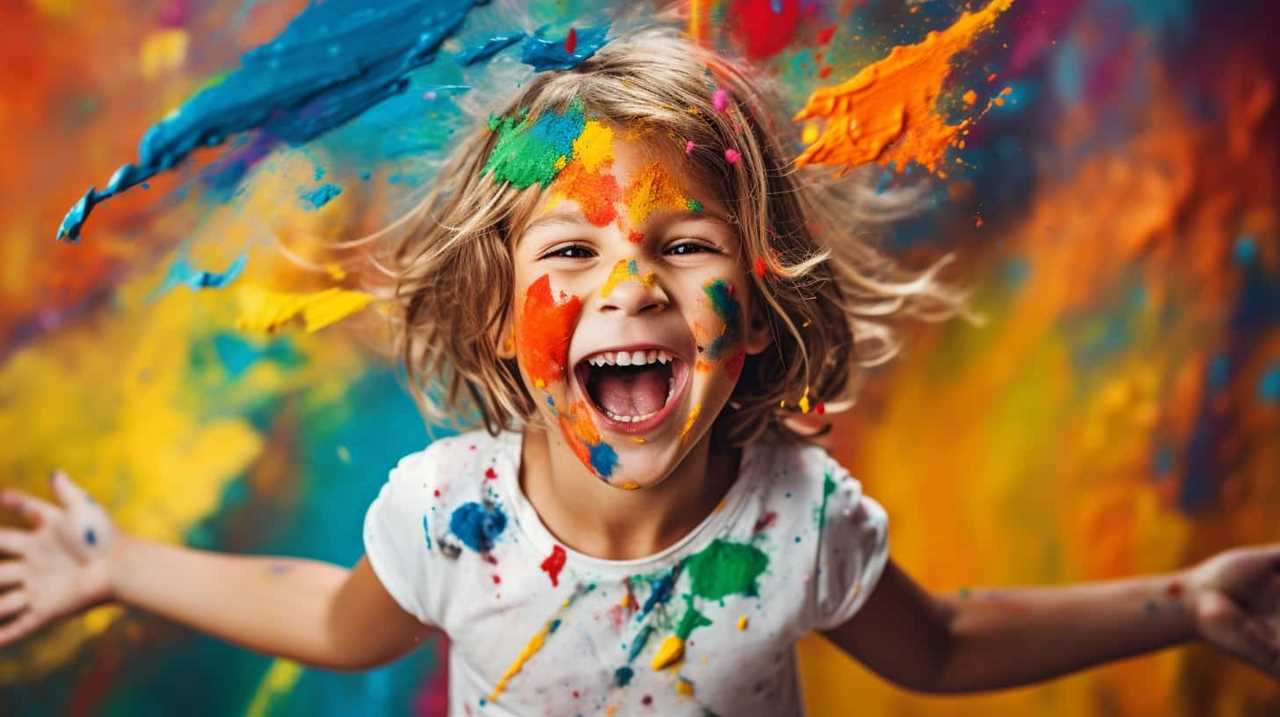
Have you ever watched a colorful sunset, feeling deeply connected to the beauty of the Earth? It’s like being enveloped in a comforting hug, right?
Well, let me share with you what environmental art pioneers have to say about this extraordinary relationship. They are the trailblazers who have used their creativity to amplify the voices of nature and challenge societal norms.
From Andy Goldsworthy’s intricate sculptures that blend seamlessly with the landscape, to Agnes Denes using her art as a tool for activism, these visionaries have paved the way for a new kind of artistic expression.
Join us on a journey through their words, as they inspire us to explore and protect our natural world through the transformative power of art.
Key Takeaways
- Environmental art pioneers believe in the power of art as activism and use it to raise awareness about environmental issues.
- They challenge societal norms through their installations and artworks and aim to instill a sense of urgency and responsibility in their audience.
- They blur the boundaries between art and nature, viewing the earth as a material to be shaped and manipulated.
- They emphasize the importance of considering the environmental impact and promoting sustainability in their work.
Andy Goldsworthy on Nature’s Influence
In our exploration of environmental art pioneers, we delve into Andy Goldsworthy’s profound perspective on the influential power of nature. Goldsworthy’s work is often inspired by the beauty and complexity of the natural world, and he believes that nature itself is the greatest source of inspiration for his artistic process. He sees nature as a teacher, constantly providing lessons and insights that guide his creative endeavors.
Goldsworthy’s artistic process involves a deep connection with the natural environment. He immerses himself in the landscape, allowing it to inform his decisions and guide his actions. He carefully observes the patterns, textures, and rhythms of nature, seeking to understand its essence and capture it in his artwork. He believes that by engaging with nature in this way, he can create works that resonate with the viewer on a profound level.
Nature’s influence on Goldsworthy’s work goes beyond mere inspiration. It’s an integral part of his artistic process, shaping the materials he uses and the techniques he employs. He often works with natural materials, such as leaves, stones, and ice, allowing their inherent qualities to inform his artistic choices. By working in harmony with nature, he creates artworks that aren’t only visually stunning but also deeply meaningful.
Agnes Denes on Art and Activism
Exploring Agnes Denes’ perspective on art and activism, we recognize the transformative potential of creative expression in advocating for environmental change. Denes, a pioneering artist known for her environmental consciousness, firmly believes in the power of art as activism. She uses her art to raise awareness about the pressing environmental issues we face today.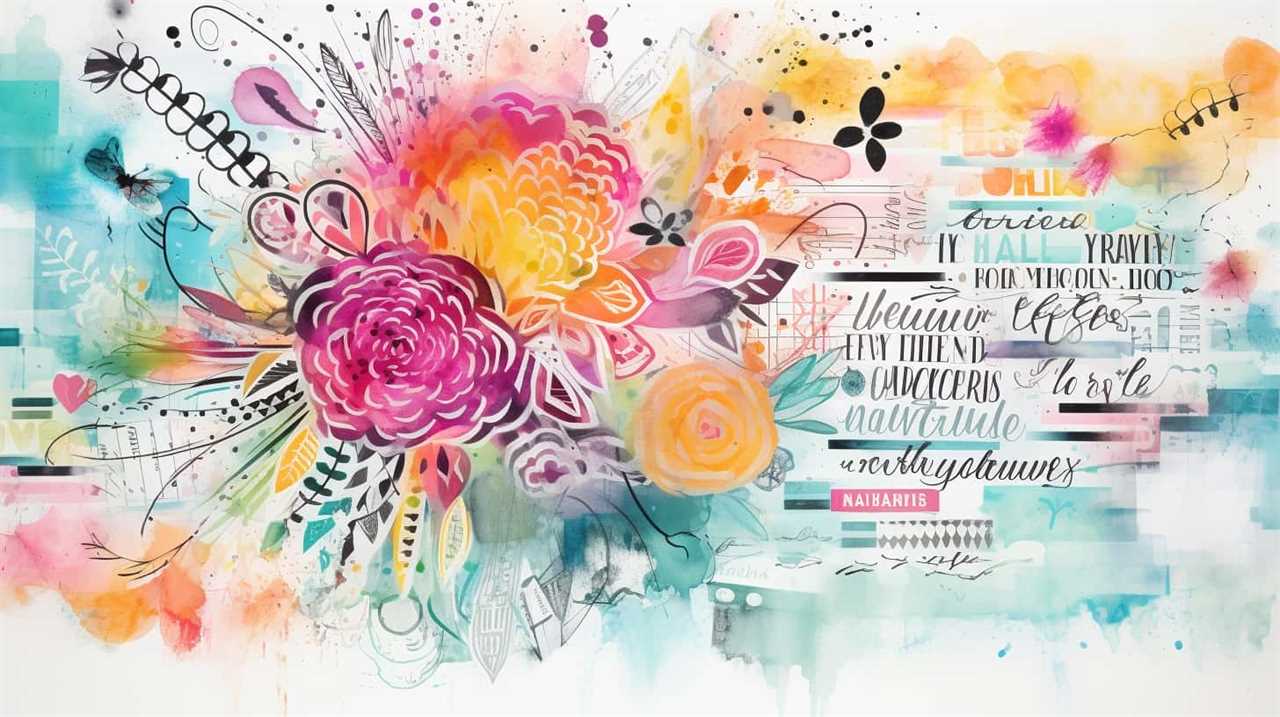
Denes sees art as a powerful tool for engaging people and inspiring action. She believes that art has the ability to transcend boundaries and connect people on a deeper level. Through her thought-provoking installations and conceptual artworks, Denes challenges societal norms and prompts viewers to question their own relationship with the environment.
For Denes, art isn’t just a means of personal expression, but a way to address environmental issues head-on. By incorporating ecological themes into her work, she aims to instill a sense of urgency and responsibility in her audience. Denes believes that art can serve as a catalyst for change, fostering a sense of environmental consciousness and prompting individuals to take action in their own lives.
Transitioning into the subsequent section about Robert Smithson’s perspective on the earth as a canvas, it’s important to note that both Denes and Smithson share a common belief in the power of art to shape our understanding of the environment and our place within it. However, while Denes focuses on activism and raising awareness, Smithson takes a different approach by exploring the physical landscape itself as a canvas for artistic expression.
Robert Smithson on the Earth as a Canvas
Robert Smithson viewed the earth as a vast canvas for artistic expression. He believed that the natural world, with its diverse landscapes and elements, could be transformed into powerful works of art. Smithson saw the earth as not just a medium, but also a source of inspiration and meaning.
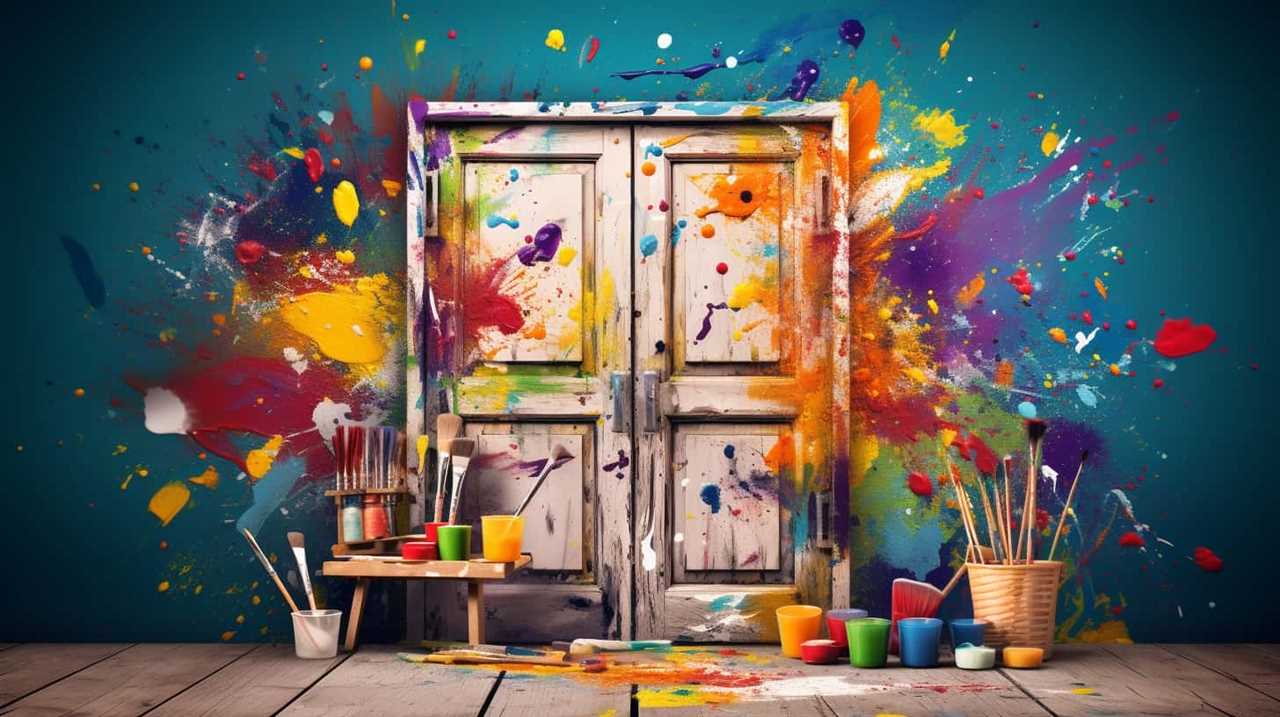
Here are four key ideas that highlight Smithson’s perspective on the earth as a canvas:
- Earth as medium: Smithson saw the earth itself as a material to be shaped and manipulated. He created large-scale land art installations, such as the iconic Spiral Jetty, which involved moving rocks and earth to create a massive spiral structure.
- Interaction with nature: Smithson emphasized the importance of engaging with nature in artistic practice. He believed that by interacting with the earth, artists could deepen their understanding of the environment and explore new ways of artistic interpretation.
- Blurring boundaries: Smithson challenged the traditional boundaries between art and nature. He believed that art shouldn’t be confined to galleries or museums, but should instead be integrated into the natural landscape, allowing viewers to experience art in a more immersive and liberating way.
- Time and impermanence: Smithson’s works often explored the concept of time and the impermanence of the natural world. He embraced the idea that art could evolve and change over time, just as the earth itself is constantly shifting and transforming.
With his unique perspective on the earth as a canvas, Robert Smithson expanded the possibilities of artistic expression and challenged conventional notions of art and nature. This exploration of the relationship between art and the environment sets the stage for the subsequent discussion on Ana Mendieta’s exploration of identity and the environment.
Ana Mendieta on Identity and the Environment
When it comes to Ana Mendieta’s artistic exploration, her work often involved a deep connection with nature and the environment.
Through her use of her own body and natural materials, Mendieta expressed her identity and experiences in a profound way.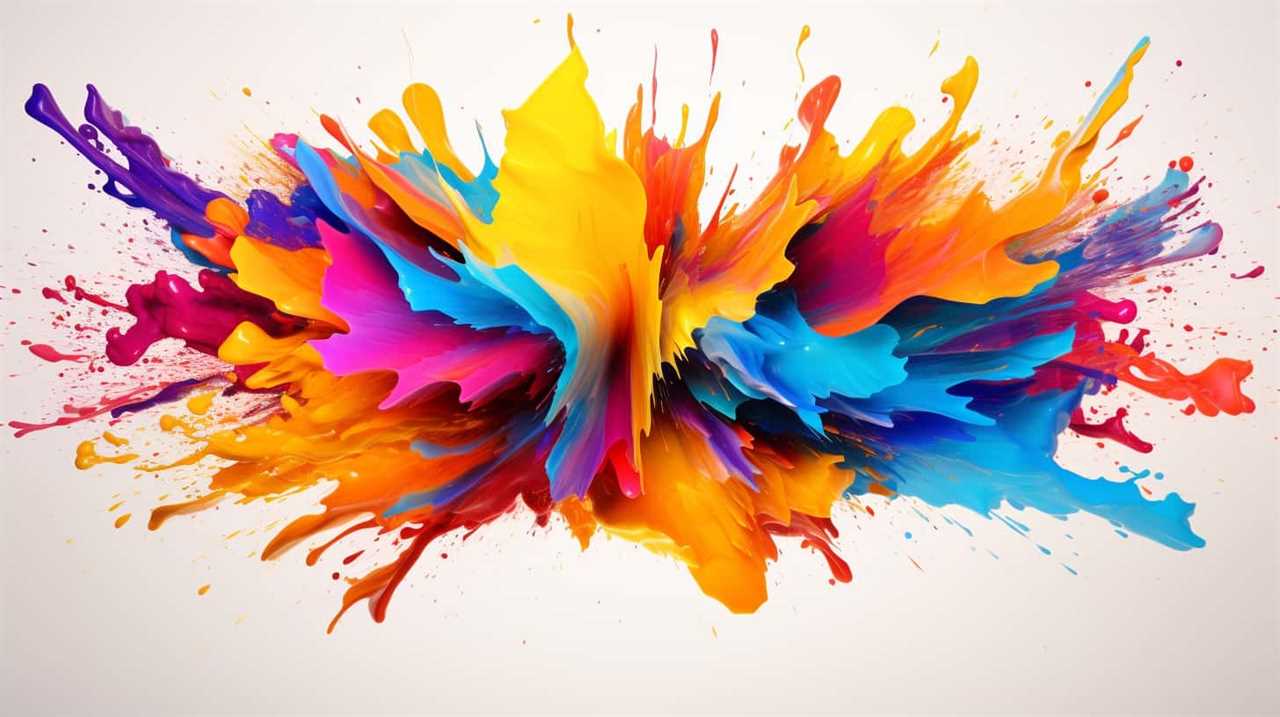
Mendieta’s Artistic Exploration
In the realm of environmental art pioneers, Ana Mendieta’s artistic exploration on identity and the environment offers a compelling perspective. Mendieta’s work delves into the relationship between cultural identity and the ecological footprint we leave behind.
Here are four key aspects of Mendieta’s artistic exploration:
- Embracing nature: Mendieta’s art often involved immersing herself in the natural world, using her body as a medium to connect with the earth and explore her cultural identity.
- Ritualistic performances: Mendieta’s performances incorporated rituals and ancient cultural practices, emphasizing the interconnectedness between humans and the environment.
- Landscapes of memory: Mendieta created sculptures and installations that depicted landscapes from her native Cuba, highlighting the importance of preserving cultural heritage and the environment.
- The body as a symbol: Mendieta used her body as a canvas to challenge societal norms and explore the relationship between the self and the natural world.
Through her artwork, Mendieta invites us to reflect on our own cultural identity and the impact we’ve on the environment, urging us towards liberation and a deeper connection with nature.
Nature as Self-Expression
Continuing from the previous subtopic, Mendieta’s exploration of nature as self-expression highlights the profound connection between our identity and the environment. Through her art, Mendieta sought to depict nature as therapy, a means of reconnecting with our true selves and finding solace in the natural world.
She believed that our identity is intrinsically linked to the landscapes we inhabit, and by immersing ourselves in these spaces, we can better understand who we are. Mendieta’s artistic interpretation of landscapes allowed her to express her innermost emotions and experiences, using the environment as a canvas for self-discovery and personal growth.
Her work not only challenged conventional notions of art but also encouraged viewers to explore their own relationship with nature and the impact it has on their identity. As we delve deeper into the topic of cultural and environmental connections, we’ll see how Mendieta’s exploration of nature as self-expression paves the way for a broader understanding of our interconnectedness with the world around us.
Cultural and Environmental Connections
As we explore the cultural and environmental connections, we can see how Ana Mendieta’s perspective on identity and the environment reveals the profound interplay between our sense of self and the natural world.
Mendieta’s work reflects a deep connection to her cultural heritage and a desire to preserve and honor it. Her art often incorporates elements of nature, highlighting the importance of sustainable design and the need to protect our environment.
- Cultural preservation: Mendieta’s work is deeply rooted in her Cuban heritage, and she uses her art as a way to explore and express her identity. By incorporating cultural symbols and rituals into her work, she emphasizes the importance of preserving and celebrating our cultural heritage.
- Sustainable design: Mendieta’s use of natural materials and her focus on the environment highlight the need for sustainable design practices. Her art serves as a reminder of the delicate balance between human existence and nature, and the importance of living in harmony with our surroundings.
- Interconnectedness: Mendieta’s work emphasizes the interconnectedness between humans and the natural world. She sees nature as an extension of ourselves, and her art reflects this belief by blurring the boundaries between her body and the environment.
- Environmental activism: Mendieta’s work also serves as a form of environmental activism. Through her art, she raises awareness about the fragility of our natural world and the urgent need to protect it. Her work challenges us to reconsider our relationship with the environment and inspires us to take action.
Christo and Jeanne-Claude on Temporary Transformations
When discussing Christo and Jeanne-Claude’s work on temporary transformations, it’s important to consider the concept of art as environmental activism.
Through their large-scale installations, they aimed to raise awareness about the impact of human activities on the environment.
Their projects not only transformed landscapes physically but also served as catalysts for conversations about sustainability and conservation.
Art as Environmental Activism
Artists Christo and Jeanne-Claude emphasized the power of temporary transformations in their environmental activism. They believed that art could be a powerful tool for protest and for raising awareness about sustainability issues. Here are four ways in which they used their art to make a difference:

- Large-scale installations: Christo and Jeanne-Claude created monumental artworks that temporarily transformed landscapes, such as wrapping buildings or placing fabric on natural landmarks. These installations captured people’s attention and sparked conversations about the environment.
- Collaboration with communities: The artists involved local communities in the creation and execution of their projects, fostering a sense of ownership and connection to the environment. This collaborative approach helped to engage and empower individuals in the process of environmental activism.
- Temporary nature of the art: By making their artworks temporary, Christo and Jeanne-Claude highlighted the impermanence of our surroundings. This served as a reminder of the need to protect and preserve our natural resources.
- Environmental impact assessments: The artists conducted thorough environmental impact assessments before implementing their projects. This demonstrated their commitment to sustainability and responsible artistic practices.
Through their temporary transformations, Christo and Jeanne-Claude used art as a powerful tool for environmental activism, inspiring individuals to take action and create positive change.
Transforming Landscapes Through Art
Transforming landscapes through art involves creating temporary installations that provoke conversations about the environment and inspire action.
One of the pioneers in this field, Christo and Jeanne-Claude, were known for their large-scale projects that transformed natural landscapes using fabric and other materials.
Their installations, such as ‘The Gates’ in New York City’s Central Park, not only altered the physical appearance of the environment but also elicited a range of emotions from viewers.
By temporarily altering these landscapes, Christo and Jeanne-Claude aimed to highlight the fragility and beauty of nature, encouraging a deeper appreciation for the environment and the need for its conservation.
Through their art, they invited people to reflect on their relationship with nature and to take active steps towards preserving it for future generations.
Maya Lin on Memorials in Nature
Maya Lin advocates for the use of nature as a backdrop for memorials. She believes that by integrating art and remembrance into natural landscapes, we can create powerful and meaningful spaces for reflection and healing. Here are four reasons why Lin’s approach to memorials in nature is significant:
- Harmony with the environment:
- Lin’s memorials blend seamlessly into their natural surroundings, enhancing the beauty and tranquility of the landscape.
- By using materials such as stone, water, and vegetation, she creates a harmonious relationship between art and nature.
- Connection to history:
- Lin’s memorials often commemorate historical events or honor the lives lost in tragic circumstances.
- Placing these memorials in natural settings allows visitors to connect with the past while also immersing themselves in the present beauty of the landscape.
- Emotional impact:
- Nature has the power to evoke a range of emotions, from serenity to awe.
- By situating memorials in natural settings, Lin taps into this emotional resonance, creating a space where visitors can reflect, mourn, and find solace.
- Sustainable approach:
- Lin’s use of natural materials and integration with the environment promotes sustainability.
- Instead of disrupting or damaging the landscape, her memorials become part of the ecosystem, leaving minimal impact and allowing visitors to experience nature’s regenerative power.
Maya Lin’s approach to memorials in nature not only creates visually stunning artworks but also provides a transformative experience for those who visit them. By utilizing the natural world as a canvas, she encourages us to remember, heal, and find solace in the beauty of our surroundings.
Richard Long on Walking as Art
Richard Long’s approach to art revolves around the act of walking, which he sees as a form of artistic exploration. Through his walks, Long creates a connection between his body and the natural environment, using nature as his canvas.
Nature as Canvas
One of the environmental art pioneers, Richard Long, emphasizes the transformative power of walking as an artistic practice. Long believes that nature serves as both inspiration and canvas for his work. He sees walking as a means to connect with the natural world and to create art that reflects the beauty and harmony of the environment.
Long’s approach to environmental aesthetics can be summarized in the following points:
- Nature as inspiration: Long draws inspiration from the landscapes he encounters during his walks. He believes that immersing oneself in nature allows for a deeper understanding and appreciation of its inherent beauty.
- Walking as art: Long views walking as a form of art in itself. Through his walks, he creates temporary interventions in nature, leaving behind traces of his presence and interactions with the environment.
- Transformative power: Long believes that walking has the power to transform both the artist and the viewer. It provides a unique and intimate experience of the natural world, fostering a sense of connection and liberation.
- Environmental aesthetics: Long’s work highlights the importance of environmental aesthetics, emphasizing the beauty and value of the natural world. He encourages viewers to reconsider their relationship with nature and to appreciate its intrinsic worth.
Through his exploration of nature as canvas, Richard Long challenges traditional notions of art and invites us to see the world around us in new and profound ways.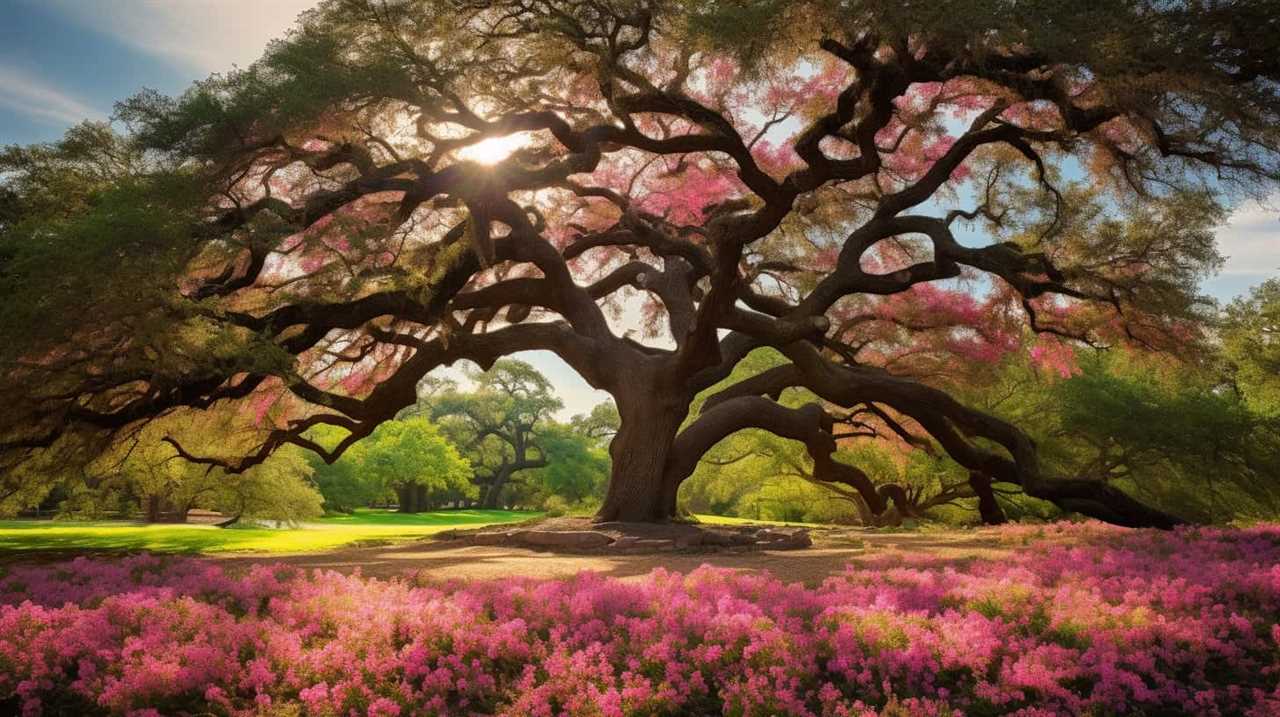
Artistic Exploration Through Movement
Continuing our exploration of Richard Long’s artistic practice, we delve into the concept of artistic exploration through movement, specifically focusing on walking as a form of art.
Long, a prominent environmental artist, has used walking as a means to engage with the landscape and create ephemeral artworks. Through his walks, Long not only connects with nature but also leaves a trace of his presence, blurring the boundaries between art and life.
Long’s approach to walking as art challenges traditional notions of artistic expression, inviting us to consider movement as a powerful tool for exploration and self-expression.
This concept extends beyond walking, encompassing other forms of movement such as dance. By exploring movement through dance and incorporating it into environmental art installations, artists have the opportunity to create immersive experiences that captivate and liberate the audience, inviting them to engage with the natural world in a new and profound way.

Conceptualizing Landscape Through Walking
As we delve into the concept of conceptualizing landscape through walking, we explore the transformative power of movement in creating a deeper connection with the natural world. Walking, as an artistic exploration, allows us to engage with our surroundings in a way that transcends traditional forms of art.
Richard Long, a renowned environmental artist, has pioneered the idea of using walking as a means of creating art. Here are four key insights into the conceptualization of movement and artistic exploration through walking:
- Embodied experience: Walking enables us to physically immerse ourselves in the landscape, experiencing it with all our senses.
- Intimate connection: Through walking, we develop a personal and intimate relationship with nature, fostering a profound understanding of our place within it.
- Spatial exploration: Walking allows us to discover hidden corners and paths, unveiling the intricate beauty of the landscape.
- Temporary interventions: By leaving traces of our presence through temporary artworks or arrangements, we emphasize the impermanence and ever-changing nature of the environment.
Through conceptualizing movement and artistic exploration through walking, we unlock new ways of perceiving and engaging with the landscape, leading to a greater appreciation and reverence for the natural world.
Patricia Johanson on Ecological Restoration
How did Patricia Johanson contribute to ecological restoration with her environmental art?
Patricia Johanson is a renowned artist who’s made significant contributions to ecological restoration through her innovative and visionary approach to environmental art. Johanson’s work focuses on the integration of ecological design principles and restoration techniques to create sustainable and harmonious landscapes.
One of Johanson’s notable projects is the Fair Park Lagoon in Dallas, Texas. This project exemplifies her commitment to ecological restoration by transforming a polluted and neglected urban water body into a thriving ecosystem. Johanson employed restoration techniques such as wetland creation, native plantings, and water purification systems to enhance the ecological health of the lagoon. Through her artistic vision and ecological expertise, she successfully revitalized the site and created a habitat for diverse flora and fauna.
Johanson’s approach to ecological restoration goes beyond mere aesthetics. She emphasizes the importance of engaging with local communities and stakeholders to develop a shared understanding of the ecological value of landscapes. By involving the community in the restoration process, Johanson fosters a sense of ownership and responsibility for the environment, leading to long-term sustainability.
Nils-Udo on Organic Installations
When exploring Nils-Udo’s perspective on organic installations, it’s important to consider the contrast between natural and man-made elements in his work.

His installations often blend seamlessly with their surroundings, blurring the line between art and nature.
This approach raises questions about the impact of these installations on their environment and how they interact with the existing ecosystem.
Natural Vs. Man-Made
In our exploration of the subtopic ‘Natural Vs. Man-Made (Nils-Udo on Organic Installations)’, we examine the distinct qualities and characteristics of organic installations.
Organic installations, in contrast to man-made structures, highlight the beauty and resilience of nature while also challenging our perception of the environment. Here are four key points to consider:
- Integration with the environment: Organic installations seamlessly blend into their surroundings, creating a harmonious relationship between art and nature. They remind us of the interconnectedness of all living things and the importance of preserving our natural resources.
- Temporary nature: Unlike man-made structures that are built to last, organic installations embrace impermanence. They’re often created using natural materials that will slowly decay or be reclaimed by the environment over time. This transience serves as a reminder of the ever-changing nature of our world.
- Minimal human intervention: Organic installations minimize human impact on the environment by utilizing materials found in nature and requiring minimal alteration of the landscape. This approach respects and celebrates the inherent beauty of the natural world.
- Evoking emotions and contemplation: Organic installations have the power to evoke a sense of awe, wonder, and introspection. They encourage us to pause, reflect, and connect with the natural world on a deeper level, fostering a greater appreciation for the environment and our role in preserving it.
Impact on Surroundings?
As we delve into the impact of organic installations on their surroundings, we can observe the transformative effects these artistic creations have on the natural environment. Nils-Udo, a prominent environmental artist, has emphasized the importance of ecological impact assessment and sustainable design integration in his work. By considering these factors, Nils-Udo’s art aims to harmonize with nature rather than disrupt it.
To better understand the impact of organic installations, let’s explore the following table:
| Ecological Impact Assessment | Sustainable Design Integration |
|---|---|
| Evaluates the environmental consequences of the installation | Incorporates principles of sustainability into the design |
| Considers factors such as habitat disturbance and resource consumption | Focuses on minimizing ecological footprint and promoting biodiversity |
| Helps ensure the long-term viability of the installation | Enhances the resilience and adaptability of the artwork |
| Encourages responsible and ethical artistic practices | Aligns with the principles of environmental stewardship |
By incorporating these elements into his work, Nils-Udo creates installations that not only provoke aesthetic appreciation but also inspire a deeper connection with the natural world. This understanding of ecological impact and sustainable design integration sets the stage for further exploration of environmental change, as we will see in the subsequent section about Helen Mayer Harrison and Newton Harrison.
Transition: Now that we have examined Nils-Udo’s approach to organic installations, let’s turn our attention to the perspective of Helen Mayer Harrison and Newton Harrison on environmental change.
Helen Mayer Harrison and Newton Harrison on Environmental Change
We, Helen Mayer Harrison and Newton Harrison, pioneers of environmental art, explore the profound impacts of environmental change. Through our work, we aim to raise awareness about the fragility and interconnectedness of ecological systems, and the urgent need for action to protect and restore them.
Here are four key insights we’ve gained in our exploration:
- Art as a catalyst for change: We believe that art has the power to inspire and mobilize people to address environmental challenges. By incorporating scientific research, aesthetics, and community engagement into our projects, we aim to create a sense of urgency and foster a collective responsibility for environmental stewardship.
- Shifting perspectives: Our work encourages viewers to rethink their relationship with the natural world. By presenting alternative narratives and envisioning sustainable futures, we challenge the dominant paradigm that views nature as a resource to be exploited.
- Ecological restoration: We advocate for the restoration of damaged ecosystems as a means to counteract environmental degradation. Through our projects, we propose innovative solutions that integrate ecological, social, and economic considerations, emphasizing the interconnectedness of these systems.
- Collaboration and interdisciplinary approaches: Addressing complex environmental issues requires collaboration across disciplines. We work with scientists, policymakers, and local communities to develop holistic strategies that combine art, science, and social engagement.
Alan Sonfist on Nature and Cultural History
Alan Sonfist delves into the intricate relationship between nature and cultural history. His work explores how nature influences cultural development and how human activities shape the natural world. Sonfist’s artistic inspiration stems from the desire to reconnect with nature and raise awareness about environmental preservation.
Sonfist’s approach to art involves creating installations that highlight the historical and cultural significance of specific landscapes. His most famous work, ‘Time Landscape,’ is a prime example of this. By transforming a vacant lot in New York City into a representation of the pre-colonial forest that once existed there, Sonfist not only brings attention to the city’s forgotten natural heritage but also prompts viewers to reconsider their relationship with the environment.
Through his art, Sonfist challenges the notion that humans are separate from nature. He argues that cultural history can’t be fully understood without acknowledging the role of the natural world in shaping societies. By incorporating elements of nature into his installations, Sonfist encourages viewers to appreciate the interconnectedness of all living things and to take responsibility for environmental preservation.
Sonfist’s work reminds us of the importance of preserving natural landscapes and understanding their cultural significance. By drawing attention to the historical and cultural dimensions of nature, he inspires us to consider our own role in shaping the environment and to work towards a more sustainable future.
Mel Chin on Art as Social Commentary
Mel Chin explores the power of art to serve as social commentary, shedding light on pressing issues and inspiring collective action. Through his work, Chin demonstrates the potential of art as activism, using it to challenge societal norms and provoke thought. His art seeks to dismantle oppressive systems and address issues of identity, making it a powerful tool for liberation.
Here are four key ideas that encapsulate Chin’s approach to art as social commentary:
- Intersectionality: Chin recognizes the importance of considering multiple aspects of identity in his work. He addresses the intersections of race, class, gender, and other social categories, highlighting the complex ways in which these factors influence individuals’ experiences and opportunities.
- Engaging the community: Chin believes that art shouldn’t exist in isolation but should actively involve and engage the community. By collaborating with local communities, he ensures that his work reflects their experiences and amplifies their voices.
- Subverting narratives: Chin challenges dominant narratives and exposes hidden truths through his art. He disrupts established power structures and encourages viewers to question the status quo, fostering a sense of critical thinking and awareness.
- Promoting collective action: Chin’s art goes beyond mere observation; it inspires viewers to take action. By presenting social issues in a thought-provoking and accessible manner, he encourages collective mobilization and empowers individuals to contribute to positive change.
Through his art, Mel Chin demonstrates the transformative potential of art as social commentary, inviting viewers to question, challenge, and actively participate in creating a more just and inclusive society.
Mary Miss on Place-Based Art
Exploring the concept of place-based art, Mary Miss emphasizes the importance of engaging with specific locations and communities to create meaningful and site-responsive artwork. Miss believes that the artistic process should involve a deep understanding and connection to the environment in which the artwork is situated. By immersing oneself in the physical and social aspects of a place, artists can create work that not only captures the essence of the location but also resonates with the people who inhabit it.
Artistic process is at the core of Miss’s approach to place-based art. She emphasizes the need for artists to spend time in the chosen location, observing and understanding its unique characteristics. This process allows artists to develop a deep environmental interpretation, informed by both natural and cultural elements. Miss believes that this immersion is crucial in order to create artwork that’s responsive to the site and engages with the surrounding community.
Through her work, Miss aims to challenge the traditional boundaries of art and create opportunities for dialogue and engagement. By focusing on specific locations and communities, she encourages viewers to reconsider their relationship with the environment and the impact they’ve on it. Miss’s approach to place-based art isn’t only about creating visually striking installations but also about fostering a sense of responsibility and connection to the places we inhabit.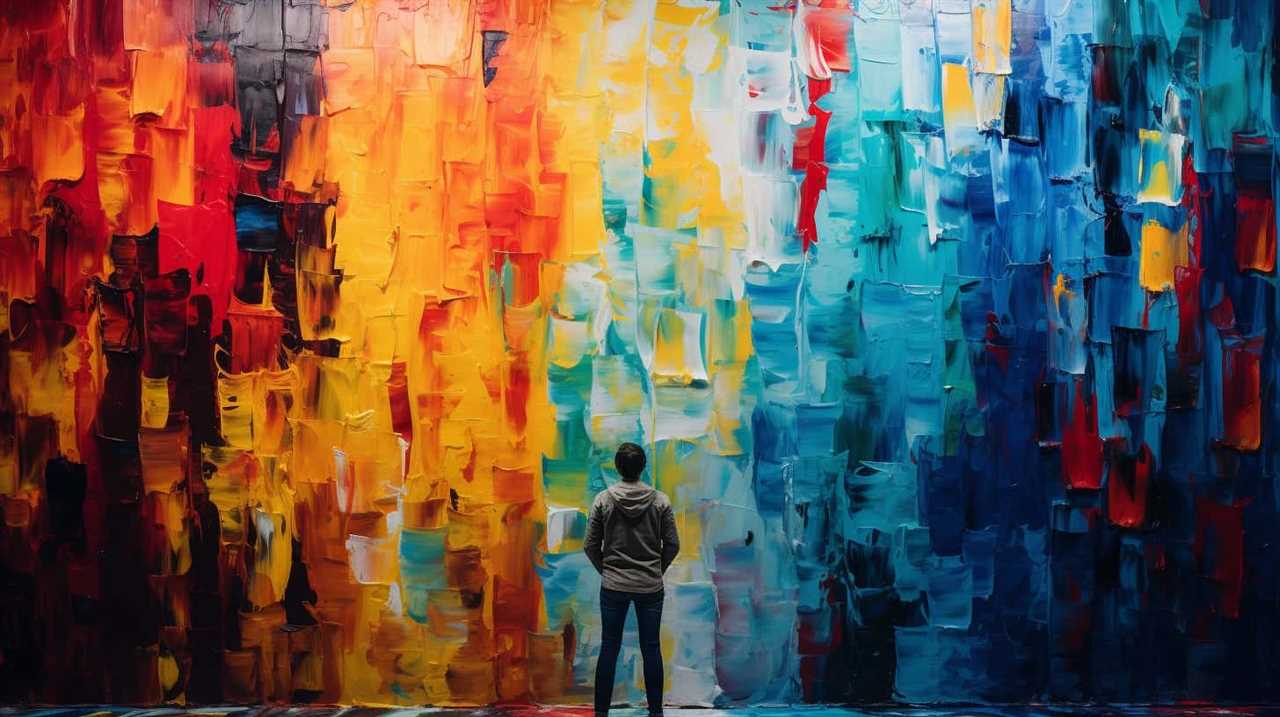
Mark Dion on Exploring the Natural World
Continuing our exploration of place-based art and its connection to the environment, we now turn to Mark Dion’s perspective on engaging with the natural world. Dion is a renowned artist known for his unique approach to exploring ecosystems through his artistic interpretations. Here are four key insights into Dion’s perspective:
- Embracing the complexity of ecosystems: Dion believes that exploring ecosystems requires acknowledging and appreciating their intricate interconnections. Rather than simplifying or reducing these systems, he encourages artists to delve into the complexity and capture it in their work.
- Blurring the boundaries between art and science: Dion’s artistic practice often involves collaborating with scientists and researchers. By intertwining art and science, he aims to bridge the gap between these disciplines and promote a deeper understanding of the natural world.
- Unveiling hidden narratives: Dion’s work often uncovers hidden narratives within ecosystems, shedding light on their historical, cultural, and ecological significance. Through his artistic interpretations, he encourages viewers to reflect on the complex relationships between humans and the natural environment.
- Provoking critical thinking: Dion’s art aims to inspire critical thinking and reflection. He challenges viewers to question their preconceived notions about the natural world and encourages them to engage with environmental issues in a more profound and meaningful way.
Mark Dion’s perspective on exploring the natural world through artistic interpretations offers a thought-provoking and multifaceted approach to environmental art. By embracing complexity, blurring boundaries, unveiling hidden narratives, and provoking critical thinking, Dion’s work invites us to engage with our surroundings in a more conscious and transformative manner.
Olafur Eliasson on Art and Climate Change
In our exploration of place-based art and its connection to the environment, we now delve into Olafur Eliasson’s perspective on art and its role in addressing climate change. Eliasson, a renowned Danish-Icelandic artist, is known for his immersive installations that blend art and science to raise awareness about environmental issues. His work often encourages viewers to engage with their surroundings and question their relationship to the natural world.
Eliasson believes that artistic interpretation plays a crucial role in climate activism. Through his installations, he aims to create experiences that provoke an emotional response and inspire action. He believes that art has the power to transcend language barriers and reach people on a deeper level, evoking empathy and igniting a sense of urgency.
One of Eliasson’s notable projects, ‘Ice Watch,’ involved transporting large blocks of ice from Greenland to urban areas, allowing people to witness the melting ice firsthand. By bringing the effects of climate change into the heart of cities, he aimed to create a tangible connection between the global issue and individual responsibility.
Eliasson’s approach to climate activism through art challenges traditional modes of communication, inviting viewers to participate actively in the discourse. His installations serve as catalysts for dialogue and reflection, encouraging individuals to question their own impact on the environment and consider alternative ways of living.
Frequently Asked Questions
How Do Andy Goldsworthy’s Artworks Reflect the Influence of Nature?
Andy Goldsworthy’s artworks reflect the influence of nature through his artistic process, using natural materials and creating nature-inspired installations. His ephemeral artworks highlight ecological awareness, artistic expression, and environmental conservation, making a profound environmental impact.
What Are Agnes Denes’ Views on the Relationship Between Art and Activism?
Agnes Denes believed that art and activism are intertwined, with art serving as a powerful tool to raise environmental consciousness. She saw the role of artists as catalysts for change, using their work to challenge societal norms and inspire action.
How Does Robert Smithson Perceive the Earth as a Canvas for His Artworks?
Robert Smithson’s exploration of the earth as a canvas for his artworks showcases his innovative approach to land art. By utilizing the natural environment, he challenges traditional notions of art and expands our understanding of artistic expression.
How Does Ana Mendieta Explore the Connection Between Identity and the Environment in Her Art?
We explore nature in art to understand the connection between identity and the environment. Ana Mendieta’s artistic expression delves into this exploration, revealing the profound interplay between our sense of self and the natural world.
How Do Christo and Jeanne-Claude Approach Temporary Transformations in Their Artistic Practice?
Christo and Jeanne-Claude approach temporary transformations in their artistic practice by creating large-scale installations that disrupt and challenge traditional notions of space and environment. Through their work, they invite viewers to question and reconsider their surroundings, fostering a sense of liberation and freedom.
What Insightful Quotes Did Environmental Art Pioneers Share?
Environmental art pioneers have often shared classic quotes on science philosophy to convey their deep insights. These quotes shed light on the interconnectedness of humans and nature, inspiring a new generation of artists to explore the relationship between art, environment, and sustainability.
Conclusion
In conclusion, the environmental art pioneers have left an indelible mark on the art world, using their creativity and passion to bring attention to pressing environmental issues.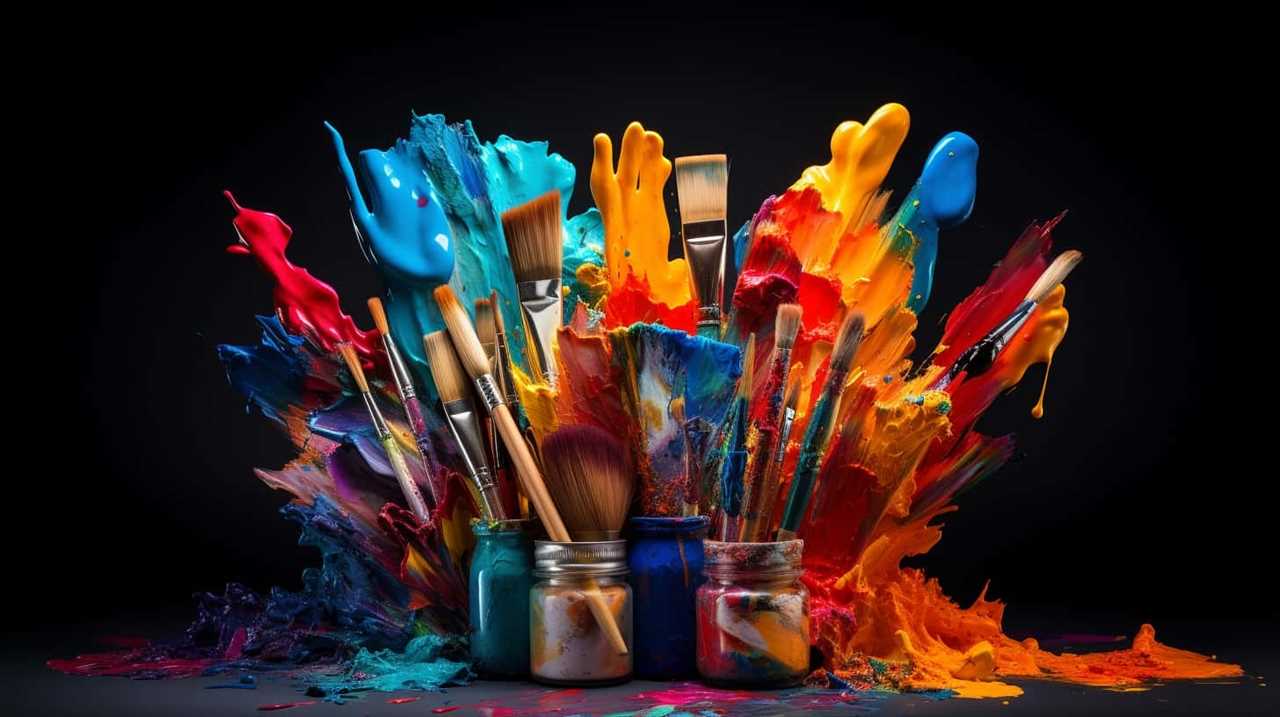
Through their works, they’ve shown us the power of nature, the importance of activism, and the potential of art to provoke change.
They’ve painted the Earth as a canvas, explored the connection between identity and the environment, and used temporary transformations to make a lasting impact.
Their art serves as a poignant allegory, reminding us of our responsibility to protect and preserve our planet.
Lauren’s talent in writing is matched by her passion for storytelling. Her love for books and deep understanding of culture and entertainment add a distinct flavor to her work. As our media and press contact, Lauren skillfully bridges the gap between afterQuotes and the broader media landscape, bringing our message to a wider audience.
Art and Creativity Quotations
7 Best Empowering Quotes by Today’s Female Creatives

We discovered a wealth of inspiration, dear readers! Today, we bring you the top 7 empowering quotes from today’s female creatives.
These remarkable women have shattered glass ceilings, challenged societal norms, and unleashed their artistic prowess, leaving an indelible mark on the world.
Through their words, they ignite the fire within us, urging us to embrace our infinite potential, unleash the power of narrative, and express ourselves fearlessly.
They remind us to challenge the status quo, celebrate our authentic identities, and push boundaries to redefine art.
With their wisdom, they celebrate the strength of vulnerability and prove that it is our greatest asset.
Get ready to be uplifted, inspired, and empowered as we delve into the minds of these incredible female creatives.
Key Takeaways
- Embracing individuality and potential empowers us to pursue our passions and explore our creativity.
- Visual storytelling through art challenges societal norms and inspires change, creating a space for marginalized voices to be heard.
- Art has the transformative potential to liberate and empower individuals, allowing us to question the status quo and envision a better world.
- Embracing vulnerability is a source of strength and liberation, enabling deeper connections with others and fostering empathy and understanding.
Yayoi Kusama: Embrace Your Infinite Potential
Yayoi Kusama’s quote inspires us to embrace our infinite potential. In a world that often seeks conformity, Kusama’s words remind us of the importance of embracing our individuality. She encourages us to break free from societal expectations and find inspiration within ourselves.
Embracing our individuality is a liberating act. It allows us to fully express who we’re without fear of judgment or rejection. It empowers us to pursue our passions, explore our creativity, and discover our unique voice in the world. By embracing our individuality, we become unstoppable forces of change and innovation.
Finding inspiration is an essential part of the creative process. Kusama urges us to look within ourselves and our surroundings for that spark of inspiration. It can be found in the simplest of things – a vibrant color, a delicate flower, or a chaotic cityscape. By being open to the world around us, we can find inspiration in unexpected places.
Kusama’s quote serves as a reminder that we’re limitless beings capable of achieving extraordinary things. By embracing our individuality and finding inspiration, we can tap into our infinite potential and create a life that’s truly fulfilling. So let’s celebrate our uniqueness and fearlessly embark on a journey of self-discovery and self-expression.
Kara Walker: Unleashing the Power of Narrative
Kara Walker’s storytelling prowess unleashes the transformative power of narrative. As a female creative, she understands the importance of storytelling in liberating and empowering individuals. Here are three ways in which she unleashes the narrative power:
- Confronting history: Walker fearlessly delves into the dark and uncomfortable corners of history, using her art to challenge traditional narratives and shed light on overlooked perspectives. By confronting history head-on, she empowers her audience to question preconceived notions and seek a deeper understanding of the world.
- Provoking dialogue: Through her provocative and thought-provoking artwork, Walker sparks conversations about race, gender, and power dynamics. By encouraging dialogue, she fosters a space for open and honest discussions, challenging societal norms and encouraging introspection.
- Amplifying marginalized voices: Walker gives a voice to those who’ve been silenced by society. Her art amplifies the experiences and stories of marginalized individuals, shedding light on their struggles and triumphs. By doing so, she empowers these voices and ensures that their narratives are heard and acknowledged.
Kara Walker’s ability to unleash the power of narrative through her storytelling is a testament to the transformative potential of art. Through her work, she encourages liberation, empowerment, and a deeper understanding of the world we live in.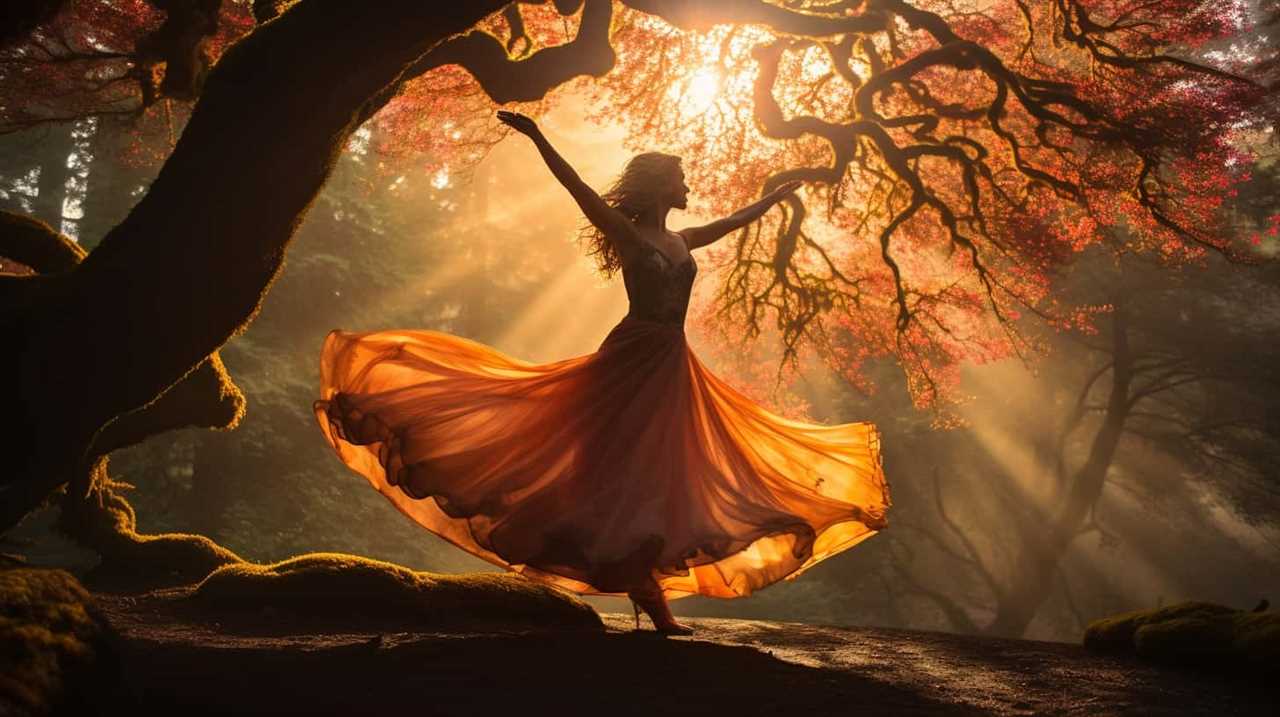
Shirin Neshat: Empowering Through Artistic Expression
When it comes to empowering through artistic expression, Shirin Neshat’s work stands out. Her art serves as a form of feminist resistance, challenging societal norms and giving a voice to marginalized women.
Through her powerful visual storytelling, Neshat has the ability to create impact and spark conversation about important issues surrounding gender, identity, and cultural boundaries.
Art as Feminist Resistance
Artistic expression serves as a powerful tool of feminist resistance, empowering individuals like Shirin Neshat to challenge societal norms and advocate for gender equality. Through her work, Neshat embodies the spirit of feminist art movements and demonstrates the potential for women’s empowerment through creativity. Here are three ways in which art serves as a vehicle for feminist resistance:
- Breaking stereotypes: Art allows women to redefine their identities and challenge traditional gender roles, breaking free from the limitations imposed by society.
- Amplifying women’s voices: Art provides a platform for women to share their experiences, perspectives, and stories, giving them a voice and raising awareness about gender inequality.
- Inspiring collective action: Art has the power to inspire and mobilize communities, fostering solidarity among women and encouraging them to stand together in the fight for gender equality.
By harnessing the power of artistic expression, Neshat and other female creatives pave the way for a more inclusive and liberated society.
This leads us to explore the impact of visual storytelling in the next section.
Impact of Visual Storytelling
Visual storytelling has a profound impact on our collective understanding and empowers us through the artistic expression of creatives like Shirin Neshat. The power of narrative in visual storytelling allows us to connect with the experiences of others, challenge societal norms, and inspire change.
Through her thought-provoking photographs and films, Neshat creates a space for marginalized voices to be heard and empowers individuals to question the status quo. Her work explores themes of identity, gender, and cultural displacement, shedding light on the complexities of the human experience.
Neshat’s artistry encourages us to confront social injustices and envision a more inclusive and liberated world. By using visual storytelling as a tool for empowerment, Neshat invites us to actively engage in the transformative power of art and create meaningful change in society.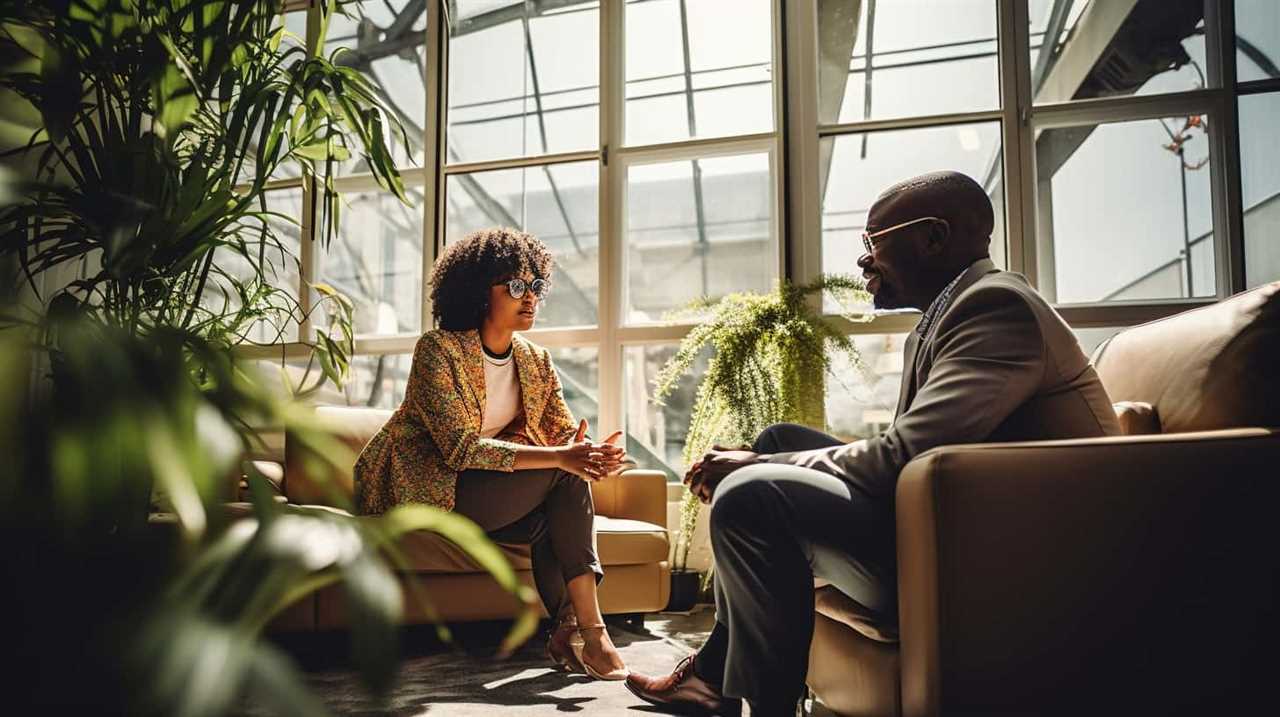
Jenny Holzer: Challenging Societal Norms
How does Jenny Holzer challenge societal norms through her creative work?
Jenny Holzer is a renowned artist who fearlessly challenges gender stereotypes and breaks artistic boundaries in her thought-provoking creations. Here are three ways in which she challenges societal norms:
- Text-based Art: Holzer incorporates powerful statements and phrases in her artwork, using mediums such as LED signs and projections. By bringing attention to social issues and questioning prevailing norms, she encourages viewers to challenge their own beliefs and perceptions.
- Public Spaces: Holzer displays her artwork in public spaces, disrupting the traditional art gallery setting. By placing her thought-provoking messages in unexpected locations, she challenges the notion that art should be confined to a specific space or audience.
- Collaboration: Holzer collaborates with diverse individuals and communities to amplify marginalized voices and experiences. By giving a platform to those who are often silenced, she challenges the dominant narrative and empowers others to do the same.
Through her artistic expression, Jenny Holzer challenges societal norms, encourages critical thinking, and promotes liberation. Her work sets the stage for the subsequent discussion about Cindy Sherman’s exploration of identity and authenticity.
Now, let’s delve into the world of Cindy Sherman and how she embraces identity and authenticity.
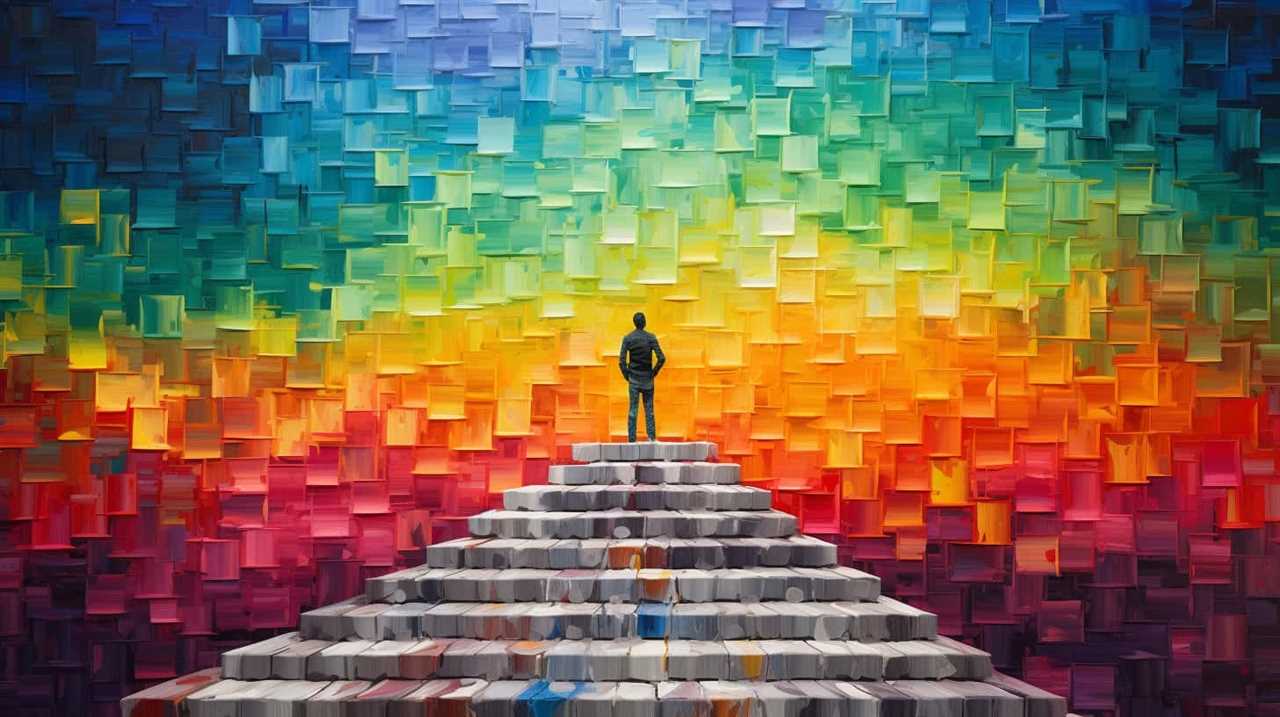
Cindy Sherman: Embracing Identity and Authenticity
Cindy Sherman’s transformative self-portraits have become iconic in the art world. Through her work, she pushes boundaries and challenges societal expectations. She embraces her identity and authenticity, fearlessly exploring different personas and roles.
Sherman’s ability to redefine herself in each photograph inspires us to question the notion of fixed identity. Her work encourages us to embrace our own individuality.
Sherman’s Transformative Self-Portraits
Sherman’s transformative self-portraits captivate with their exploration of identity and authenticity. Through her art, she delves into the depths of self-reflection, allowing viewers to question their own perceptions of themselves. Her work challenges societal expectations and redefines self-perception in the following ways:
- Exploring Different Identities: Sherman’s photographs showcase a range of characters, each with their own unique story and identity. She encourages us to embrace the multitude of selves that exist within us.
- Breaking Stereotypes: By stepping into various roles and personas, Sherman dismantles societal stereotypes and challenges the limitations placed on individuals based on gender, age, and appearance.
- Confronting Authenticity: Sherman’s self-portraits force us to confront the notion of authenticity. She questions what it means to be true to oneself in a world that often imposes expectations and masks.
Sherman’s transformative self-portraits open up a world of self-exploration and liberation, inviting us to challenge societal expectations and embrace our true identities.
Challenging Societal Expectations
Continuing the exploration of identity and authenticity, we challenge societal expectations by embracing our true identities and confronting the limitations imposed on us. Breaking stereotypes and empowering individuality are crucial in our quest for liberation.
Cindy Sherman, through her transformative self-portraits, exemplifies this defiance against societal norms. By using her photographs to challenge and subvert conventional notions of femininity, she encourages us to question and redefine how we perceive ourselves and others. Sherman’s work serves as a powerful reminder that we’ve the agency to shape our own identities and challenge the boxes that society tries to place us in.
As we delve into the next section about Marina Abramović and her boundary-pushing art, we continue to explore the ways in which artists challenge societal expectations and redefine the boundaries of creativity.
Marina Abramović: Pushing Boundaries and Redefining Art
How does Marina Abramović push boundaries and redefine art?
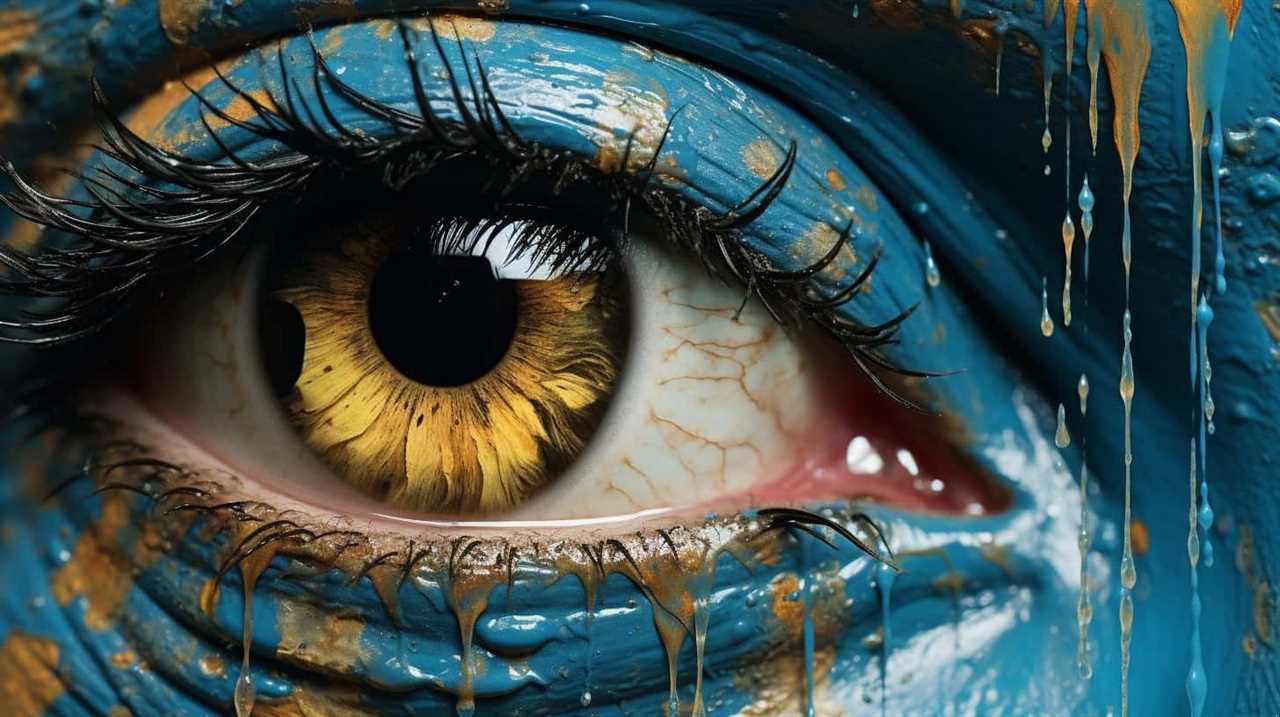
Marina Abramović is a renowned performance artist who continuously challenges the limits of human endurance and redefines the boundaries of art. Here are three ways she accomplishes this:
- Physical and Emotional Limits: Abramović’s performances often involve intense physical and emotional experiences that push the boundaries of what the human body and mind can endure. Through her endurance-based works, she forces viewers to confront their own limitations and question societal expectations of art.
- Audience Participation: Abramović actively involves the audience in her performances, blurring the line between artist and spectator. By breaking down this traditional barrier, she challenges the notion of passive observation and encourages active engagement, allowing viewers to become co-creators in the artistic experience.
- Provocation and Controversy: Abramović’s work often sparks controversy and challenges societal norms. Through her provocative and boundary-pushing performances, she forces us to question established conventions and confront uncomfortable truths. By pushing these boundaries, she opens up new possibilities for artistic expression and challenges the status quo.
Marina Abramović’s fearless exploration of boundaries in performance and her relentless efforts to redefine art through endurance have made her an influential figure in the art world, inspiring countless artists to push their own boundaries and break free from limitations.
Tracey Emin: Celebrating the Strength of Vulnerability
Tracey Emin’s celebration of the strength of vulnerability is a powerful testament to our collective ability to embrace and overcome our own weaknesses. She reminds us that there’s strength in vulnerability, and that by embracing our imperfections, we can find liberation and empowerment.
Emin’s artwork often delves into deeply personal experiences and emotions, exposing her vulnerabilities to the world. Through her honesty and openness, she challenges societal norms and expectations, encouraging us to do the same. She shows us that vulnerability isn’t a weakness, but a source of strength and authenticity.
By embracing our imperfections, we can break free from the constraints of perfectionism and societal pressure. Emin’s work encourages us to be unapologetically ourselves, to embrace our flaws and vulnerabilities, and to celebrate our unique journeys.
In a world that often prizes strength and invulnerability, Emin’s celebration of vulnerability is a radical act of self-acceptance. It reminds us that we’re all human, with our own struggles and weaknesses. And by embracing these aspects of ourselves, we can find the strength to overcome obstacles, grow, and thrive.
Emin’s message is clear: our vulnerabilities don’t define us; they empower us. They allow us to connect with others on a deeper level and to embrace our own humanity. Through her art, Emin encourages us to embrace vulnerability as a source of strength and liberation.
Frequently Asked Questions
What Is Yayoi Kusama’s Background and How Did She Become a Successful Artist?
Yayoi Kusama’s journey to success was shaped by her unique background and artistic vision. Her innovative approach to art and exploration of themes like mental health and feminism have had a profound influence on contemporary art.

Are There Any Specific Themes or Messages That Kara Walker Explores in Her Artwork?
Kara Walker’s artwork delves into the exploration of race and history, as well as the examination of power dynamics and stereotypes. Her thought-provoking pieces challenge societal norms and invite us to question the narratives we’ve been taught.
How Does Shirin Neshat Use Her Artistic Expression to Empower Women?
Shirin Neshat’s artistic expression is a powerful tool for empowering women. Her work challenges societal norms and amplifies the voices of women, inspiring a sense of liberation and strength. The impact of Neshat’s art on female empowerment is profound and transformative.
What Societal Norms Does Jenny Holzer Challenge Through Her Artwork?
Jenny Holzer’s artwork challenges societal norms by questioning gender expectations and authority figures. Through her powerful words and thought-provoking installations, she encourages us to question and challenge the status quo.
How Does Cindy Sherman’s Work Reflect Her Exploration of Identity and Authenticity?
Cindy Sherman’s work reflects her exploration of self and feminine identity. Through her photographs, she challenges societal norms and questions the authenticity of identity. Her art invites us to question and liberate ourselves.
Conclusion
These empowering quotes by today’s female creatives remind us of the infinite potential we possess and the power of artistic expression. They challenge societal norms, celebrate vulnerability, and push boundaries to redefine art.
Through their work, Yayoi Kusama, Kara Walker, Shirin Neshat, Jenny Holzer, Cindy Sherman, Marina Abramović, and Tracey Emin inspire us to embrace our identity, authenticity, and strength.
Their words and art serve as a powerful reminder that we’ve the ability to shape our own narratives and make a difference in the world.
Lauren’s talent in writing is matched by her passion for storytelling. Her love for books and deep understanding of culture and entertainment add a distinct flavor to her work. As our media and press contact, Lauren skillfully bridges the gap between afterQuotes and the broader media landscape, bringing our message to a wider audience.
Art and Creativity Quotations
Feminist Artists Speak: Quotes on Social Issues

At Feminist Artists Speak: Quotes on Social Issues, we firmly believe in the ability of art to challenge and reform society. By highlighting the viewpoints of feminist artists, we explore a range of social issues affecting women and marginalized communities.
From the eloquent words of Frida Kahlo, who said, ‘I paint my own reality,’ to the bold statements of Guerrilla Girls, who demand gender equality in the art world, we celebrate the diversity and strength of feminist art.
Our collection of quotes delves into topics such as breaking gender stereotypes, addressing violence against women, and reclaiming female identity.
Join us as we use art as a tool for social change and empower women through artistic expression.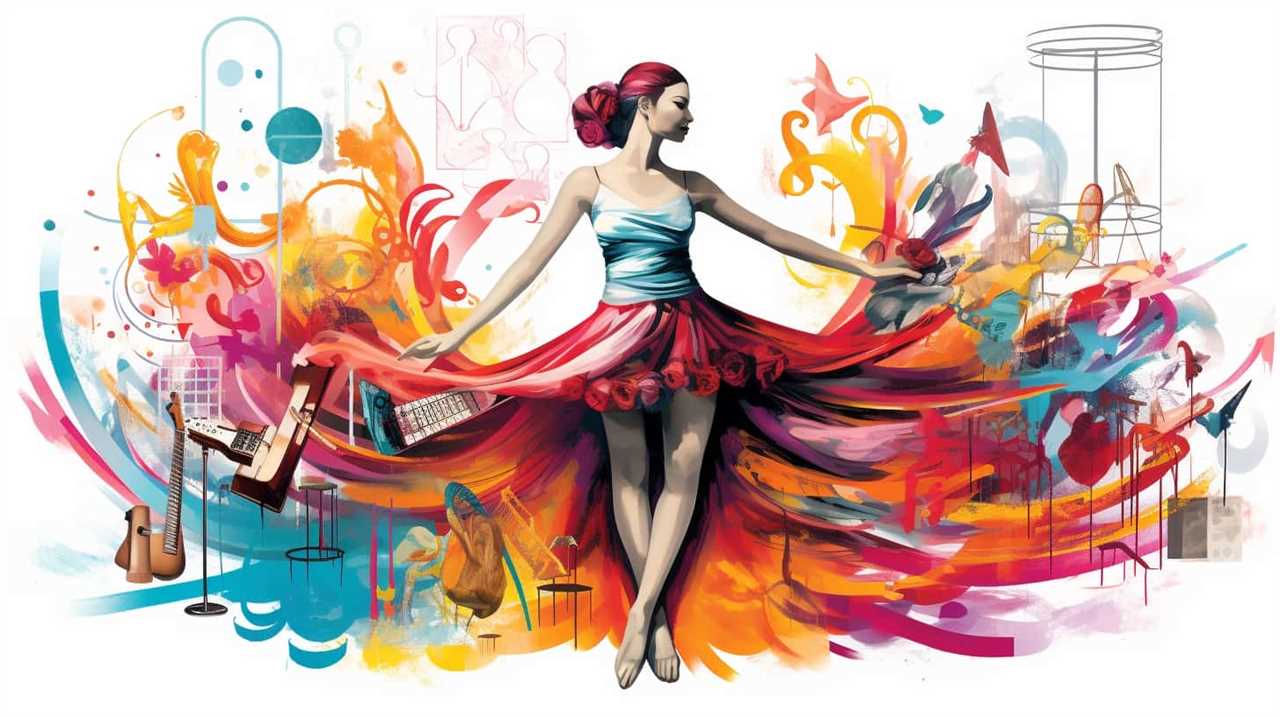
Key Takeaways
- Feminist artists use their art to challenge traditional norms and expose the flaws and limitations of social constructs.
- Artwork breaks the mold of traditional gender roles and embraces gender fluidity, emphasizing the importance of intersectionality.
- Feminist artists shed light on the ways in which patriarchy marginalizes women and actively contribute to the fight for gender equality.
- Through their art, feminist artists amplify marginalized voices, subvert gender stereotypes, and critique power dynamics in patriarchal systems.
The Power of Artistic Expression
Artistic expression holds immense power in shaping societal perspectives and challenging the status quo. Through artistic innovation, artists have the ability to explore and dismantle social constructs that perpetuate inequality and oppression. Art has the potential to provoke thought, evoke emotions, and initiate important conversations that can lead to societal change.
Artistic innovation allows artists to push boundaries and challenge traditional norms, providing a fresh perspective on social issues. By using various mediums such as painting, sculpture, photography, and performance art, artists can convey powerful messages that resonate with individuals on a deep level. Through their work, they can shed light on the complexities of social constructs, exposing their flaws and limitations.
Exploring social constructs through art can bring attention to issues such as gender inequality, racism, and systemic injustice. It allows for a critical examination of societal norms and expectations, encouraging individuals to question and challenge the established order. By presenting alternative narratives and perspectives, artists can inspire viewers to think differently and consider new possibilities.
As we delve into the subsequent section on ‘breaking gender stereotypes’, it’s important to recognize that artistic expression plays a crucial role in dismantling these harmful stereotypes. Through art, artists can challenge gender norms, defy societal expectations, and empower individuals to embrace their authentic selves. Artistic expression has the power to liberate individuals from the confines of gender roles and foster a more inclusive and equitable society.
Breaking Gender Stereotypes
Through our artwork, we aim to challenge and dismantle gender stereotypes that perpetuate inequality and limit individual expression. In redefining masculinity and promoting gender equality, we strive to create a world where all individuals can freely express themselves without the constraints of societal expectations.
- Breaking the Mold: Our artwork seeks to break the mold of traditional gender roles, showcasing individuals who defy stereotypes and embrace their authentic selves. By challenging the notion that masculinity is synonymous with aggression and dominance, we encourage a more inclusive and diverse understanding of what it means to be a man.
- Embracing Fluidity: We celebrate the beauty of gender fluidity and reject the binary concept of gender. Our artwork explores the idea that gender isn’t fixed, but rather a spectrum that allows for endless possibilities of self-identification. By embracing gender fluidity, we challenge the rigid norms that confine individuals to predetermined roles based on their assigned sex.
- Intersectionality Matters: Recognizing the interconnected nature of social identities, we emphasize the importance of addressing gender stereotypes within the context of race, class, sexuality, and other intersecting factors. By acknowledging the unique experiences of individuals who face multiple forms of discrimination, we strive to create a more inclusive and equitable society.
- Empowering through Representation: By depicting diverse and empowered characters in our artwork, we aim to inspire and uplift marginalized communities. Through positive representation, we challenge the harmful stereotypes that have historically marginalized and silenced individuals based on their gender identity. Our art aims to provide a platform for marginalized voices and promote a more inclusive understanding of gender.
Challenging Patriarchal Norms
When it comes to challenging patriarchal norms, feminist artists have played a crucial role in disrupting traditional power structures and advocating for gender equality.
Through their art, they’ve confronted and critiqued the oppressive systems that perpetuate patriarchy, shedding light on the ways in which it marginalizes and suppresses women.
Feminist Art Impact
How can feminist artists actively challenge patriarchal norms through their work?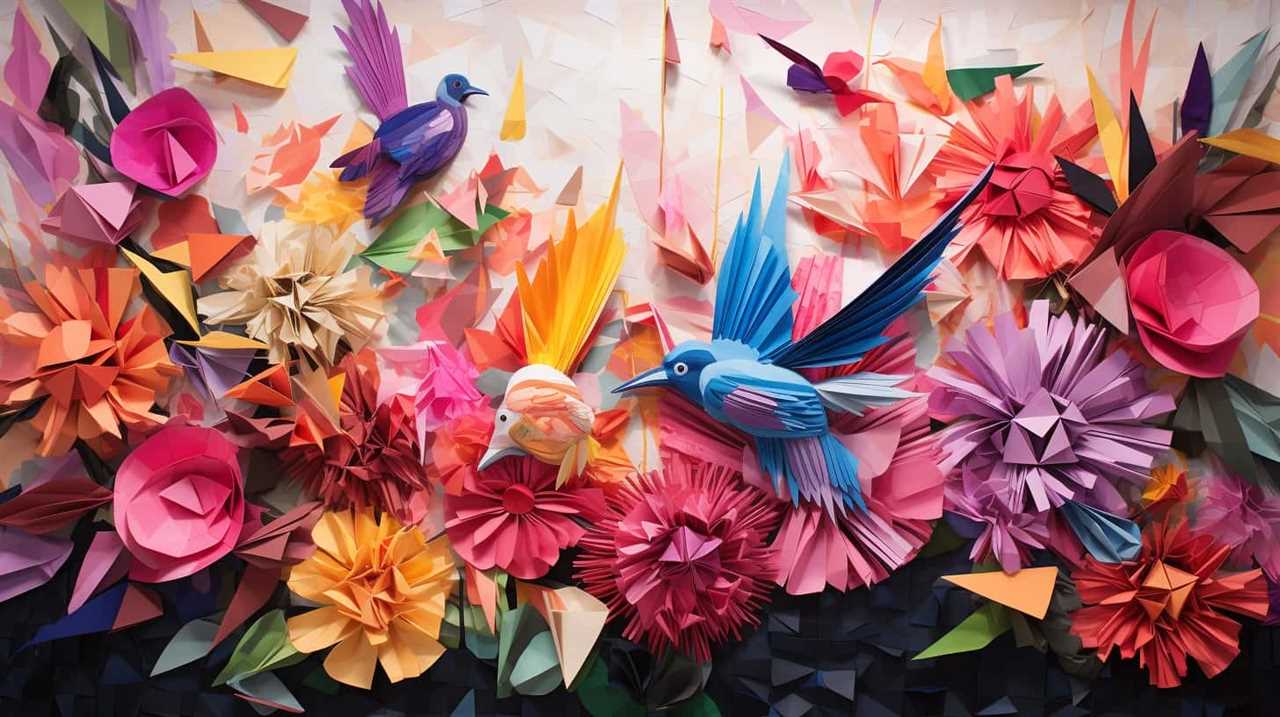
Feminist art impact goes beyond creating aesthetically pleasing pieces; it’s about promoting inclusivity and challenging the status quo. Here are some ways feminist artists can achieve this:
- Using their art to amplify marginalized voices, giving them a platform to be heard and seen.
- Subverting traditional gender roles and stereotypes in their work, challenging the binary notion of gender.
- Creating art that addresses and critiques the power dynamics embedded in patriarchal systems.
- Collaborating with other artists and communities to create a collective movement towards liberation.
By actively challenging patriarchal norms through their work, feminist artists contribute to the ongoing fight for gender equality and social justice. Their art has the power to inspire, provoke thought, and ignite change.
Now, let’s delve into the next section about breaking gender stereotypes.
Breaking Gender Stereotypes
What are some effective ways for feminist artists to challenge patriarchal norms and break gender stereotypes?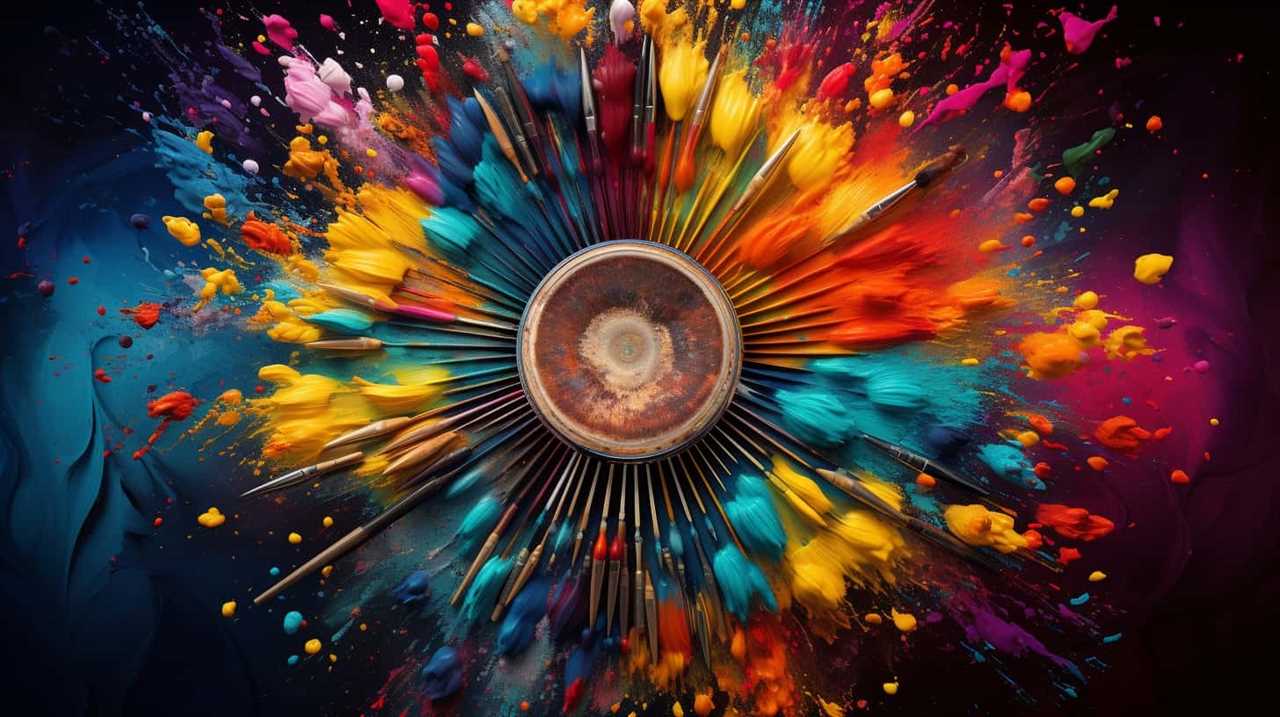
One powerful approach is promoting inclusivity within their artwork. By featuring a diverse range of identities and experiences, feminist artists can challenge the notion that there’s a singular, dominant narrative of femininity or masculinity.
By showcasing the beauty and strength in all forms of gender expression, these artists redefine masculinity and challenge the narrow expectations placed on individuals based on their gender.
Through their work, feminist artists can inspire viewers to question and challenge societal norms, fostering a more inclusive and accepting society.
Empowering Marginalized Voices?
Feminist artists actively challenge patriarchal norms by empowering marginalized voices and dismantling oppressive systems. They believe in amplifying underrepresented voices and promoting inclusivity and diversity.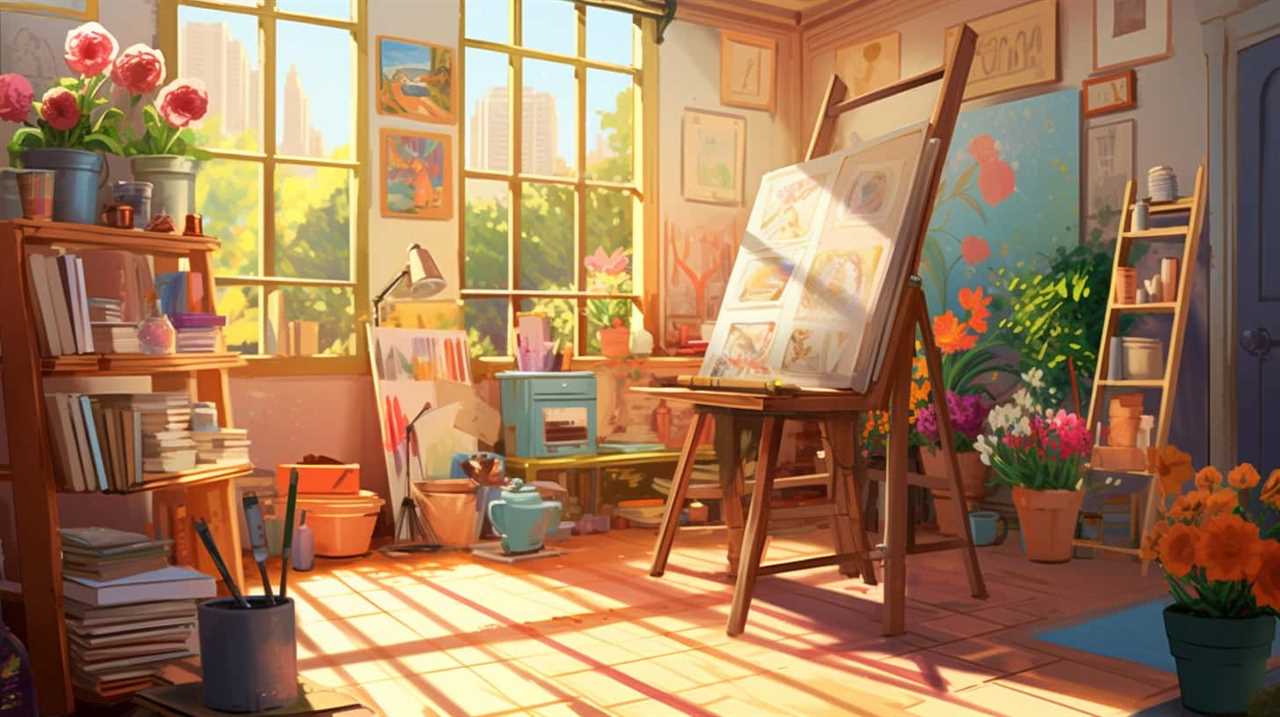
Through their art, they aim to create spaces that allow for the expression of diverse experiences and perspectives. By centering the stories of those who’ve historically been silenced or marginalized, feminist artists challenge societal norms and push for a more equitable and just world. They use their platforms to shed light on the experiences of women of color, LGBTQ+ individuals, disabled individuals, and other marginalized groups.
Through their work, they strive to break down the barriers that prevent these voices from being heard and to create a society that values and respects the experiences of all individuals.
Transitioning into the subsequent section about ‘addressing violence against women’, it’s clear that feminist artists play a crucial role in advocating for the rights and safety of all women.
Addressing Violence Against Women
We stand against violence towards women and actively work towards its eradication. Combating domestic violence and promoting a consent culture are crucial aspects of our feminist art movement. Through our artistic expressions, we aim to shed light on the pervasive issue of violence against women and challenge the societal norms that perpetuate it.
Feminist artists utilize various mediums to address this issue, from visual art and performance to literature and film. By creating thought-provoking pieces that explore the experiences of survivors, we strive to raise awareness and foster empathy. Our art serves as a powerful tool to initiate conversations about the root causes of violence against women and the urgent need for change.
Furthermore, we recognize that violence against women intersects with other forms of oppression, such as racism, ableism, and homophobia. Our art embraces intersectionality, acknowledging the unique experiences and challenges faced by women of different backgrounds. By amplifying their voices and stories, we aim to dismantle the systems of power that perpetuate violence and discrimination.
As feminist artists, we believe that art has the potential to inspire social change and challenge the status quo. By addressing violence against women in our work, we hope to contribute to a world where all women can live free from fear and violence.
In the next section, we’ll examine how feminist art embraces intersectionality and explores the interconnectedness of social issues.

Intersectionality in Feminist Art
As feminist artists, our goal is to explore the interconnectedness of social issues through the lens of intersectionality in our art. We believe that addressing the complexities of gender inequality requires acknowledging and addressing the various intersecting identities and systems of oppression that individuals experience. In our artwork, we strive to amplify the voices of marginalized communities and challenge the traditional narratives that perpetuate discrimination.
To evoke an emotional response from our audience, we incorporate the following elements in our art:
- Racial diversity: We celebrate the beauty and strength of diverse racial backgrounds, recognizing that the struggle for gender equality is intertwined with racial justice. Through our art, we aim to challenge stereotypes and highlight the experiences of women of color.
- LGBTQ+ representation: We believe that the fight for gender equality can’t be separated from the fight for LGBTQ+ rights. Our art seeks to create visibility and representation for queer and transgender individuals, fostering a more inclusive and accepting society.
- Intersectional narratives: We tell stories that reflect the complexity of lived experiences, exploring the intersectionality of race, gender, sexuality, and other identities. By showcasing these narratives, we hope to foster empathy and understanding among our audience.
- Challenging power structures: Our art confronts the power dynamics that contribute to gender inequality and encourages critical reflection. Through visual and conceptual techniques, we aim to provoke thought and inspire action towards dismantling oppressive systems.
Reclaiming Female Identity
In reclaiming our female identity, we strive to redefine societal norms and challenge the expectations placed upon women. Female empowerment is at the heart of this movement, as we seek to dismantle the restrictive constructs that have long confined and limited us. By redefining femininity, we aim to break free from the narrow definitions and stereotypes that have been imposed upon us, allowing us to embrace the full spectrum of our identities and experiences.
This process involves questioning and rejecting the notion that there’s a singular, fixed way to be a woman. We celebrate the diversity and complexity of our experiences, recognizing that there’s no one-size-fits-all definition of femininity. We reject the pressure to conform and instead encourage individuality, authenticity, and self-expression.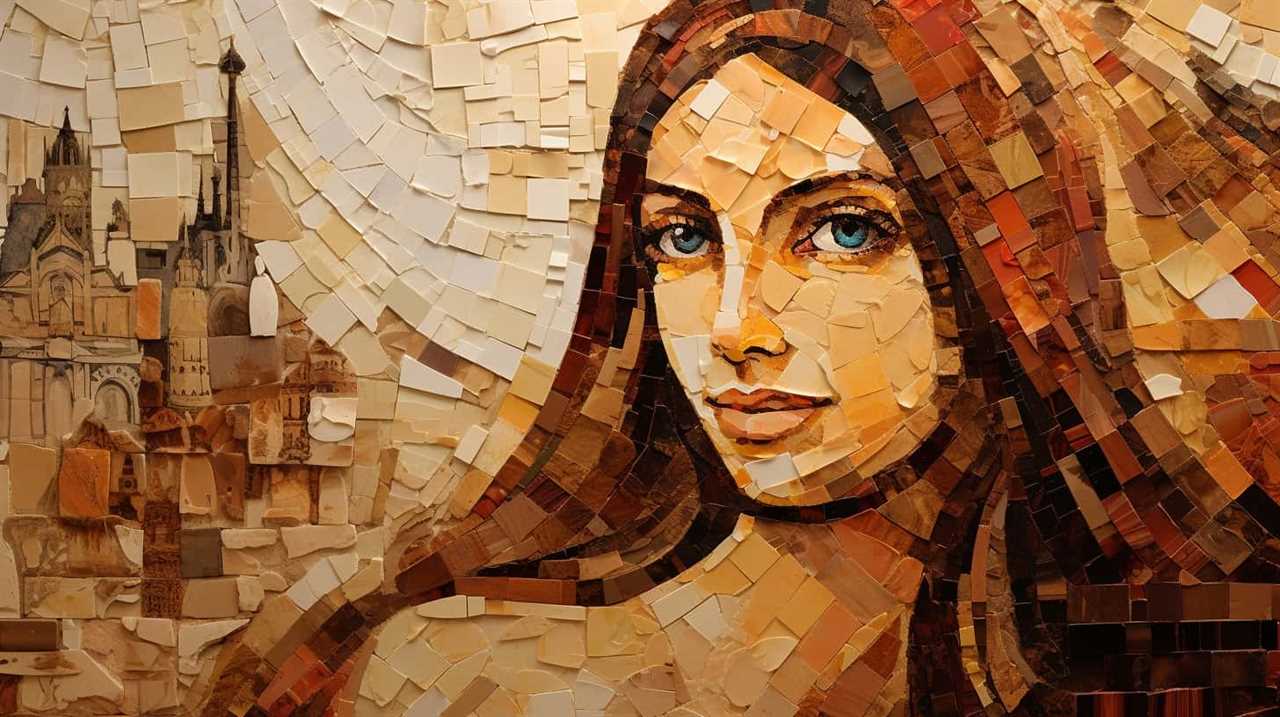
Reclaiming our female identity is an act of defiance against the patriarchal systems that seek to control and diminish us. It’s a powerful affirmation of our worth, agency, and autonomy. By challenging societal norms and expectations, we pave the way for a more inclusive and equitable world, where all individuals are free to explore and express their true selves.
As we reclaim and redefine our female identity, we confront the deeply ingrained body image issues that have plagued women for centuries.
Confronting Body Image Issues
Confronting the deeply ingrained body image issues that have plagued women for centuries, we aim to challenge societal standards of beauty and promote self-acceptance. Body positivity and media representation play crucial roles in this ongoing battle. Here are some key aspects to consider:
- Diverse Representation: We demand media to showcase a diverse range of body types, sizes, and shapes. By celebrating all bodies, regardless of societal norms, we break down the harmful notion that there’s only one ‘ideal’ body.
- Challenging Beauty Standards: It’s essential to question and dismantle the unrealistic and unattainable beauty standards imposed on women. We must reject the idea that our worth is determined solely by our appearance.
- Embracing Individuality: Each person is unique, and our bodies tell our stories. By embracing our individuality, we empower ourselves and others to appreciate and love the bodies we inhabit.
- Promoting Self-Acceptance: Body positivity encourages us to accept ourselves as we are, flaws and all. It’s about embracing our bodies with kindness, compassion, and respect, rather than striving for an unattainable perfection.
Confronting body image issues requires us to challenge the status quo, redefine beauty on our own terms, and foster a culture of self-acceptance and liberation. Together, we can create a world where all bodies are celebrated and accepted, free from the constraints of societal expectations.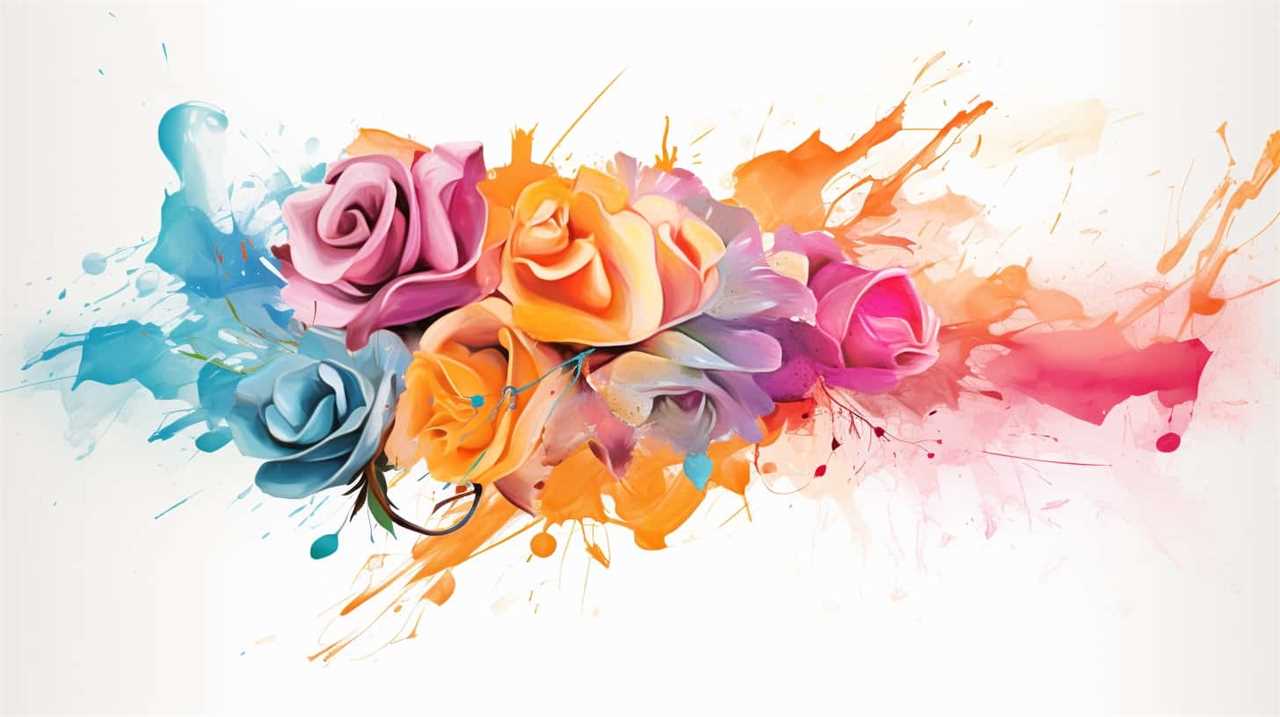
Art as a Tool for Social Change
Artists have always been at the forefront of using their creative expression as a powerful tool for driving social change. Through their work, they’ve the ability to cultivate empathy and inspire collective action.
Art has the unique ability to communicate complex social issues in a way that resonates with people on a deep emotional level. It can challenge existing norms, provoke thought, and ignite conversations that lead to change.
One way artists achieve this is by cultivating empathy through their art. They’ve the power to create a connection between the viewer and the subject matter, allowing individuals to see the world through someone else’s eyes. By depicting the experiences and struggles of marginalized communities, artists can evoke a sense of empathy in the audience, helping them to understand and relate to the issues at hand.
Another way art drives social change is by inspiring collective action. Art has the power to bring people together, creating a sense of unity and solidarity. When people are moved by a piece of art that addresses a social issue, it can motivate them to take action, whether it be through participating in protests, signing petitions, or engaging in meaningful conversations.
Artists have a responsibility to use their platform to address social issues and spark change. Through their creativity and activism, they’ve the power to shape the world we live in and create a better future for all.
Empowering Women Through Art
How can feminist artists empower women through their art?
Feminist artists have the power to empower women through their art by challenging traditional notions of female representation and advocating for gender equality. Through their work, they can inspire women to embrace their strength, celebrate their bodies, and reclaim their identities.
Here are four ways in which feminist artists can empower women through their art:

- Representation: By creating art that showcases diverse and authentic representations of women, feminist artists can challenge the limited and often objectifying portrayals that dominate mainstream media. This can help women feel seen, valued, and validated.
- Visibility: Feminist artists can use their platforms to amplify the voices and stories of marginalized women, highlighting their experiences and struggles. This increased visibility can foster empathy, understanding, and solidarity among women.
- Reclamation: Through their art, feminist artists can encourage women to reclaim their bodies, their sexuality, and their autonomy. By challenging societal expectations and norms, they can empower women to embrace their desires, choices, and agency.
- Education: Feminist artists can use their art to educate and inform others about the importance of gender equality. Through their work, they can raise awareness about the systemic barriers that women face and inspire action towards a more just and equitable society.
Through their art, feminist artists have the potential to ignite change, challenge the status quo, and empower women to embrace their power and worth. By creating spaces and narratives that celebrate female representation and advocate for gender equality, they can inspire women to break free from societal constraints and strive for liberation.
Frequently Asked Questions
How Can Feminist Art Contribute to Addressing Intersectionality and Inclusivity in Society?
Exploring intersectionality in feminist art allows us to understand and challenge the interconnected systems of oppression. Art serves as a catalyst for inclusivity and social change by amplifying marginalized voices and dismantling power structures.
What Are Some Examples of Feminist Art That Have Successfully Challenged Patriarchal Norms?
Feminist art has successfully challenged patriarchal norms by exploring themes of resistance and empowerment. It has examined traditional gender roles, sparking conversations and driving societal change. Through creativity, we dismantle the status quo.
How Does the Use of Art as a Tool for Social Change Empower Women in Their Fight for Gender Equality?
Artistic expression has the power to amplify women’s voices and challenge societal norms. Through art, women can reclaim their stories, challenge stereotypes, and inspire others to join the fight for gender equality.
In What Ways Does Feminist Art Help in Reclaiming and Redefining Female Identity?
Feminist art plays a crucial role in reclaiming and redefining female identity by challenging societal norms and exploring gender stereotypes. It empowers women to embrace their own narratives and redefine female sexuality on their own terms.
Can You Provide Some Insights Into the Role of Feminist Art in Addressing and Raising Awareness About Violence Against Women?
Feminist art plays a crucial role in promoting gender equality and raising awareness about violence against women. Through its powerful visual imagery and thought-provoking messages, it acts as a form of resistance, challenging societal norms and advocating for change.
Conclusion
In conclusion, feminist artists have used their artwork as a powerful tool to challenge societal norms and advocate for social change.
One interesting statistic that highlights the impact of their work is that over 70% of women who view feminist art report feeling empowered and inspired to challenge gender inequality in their own lives.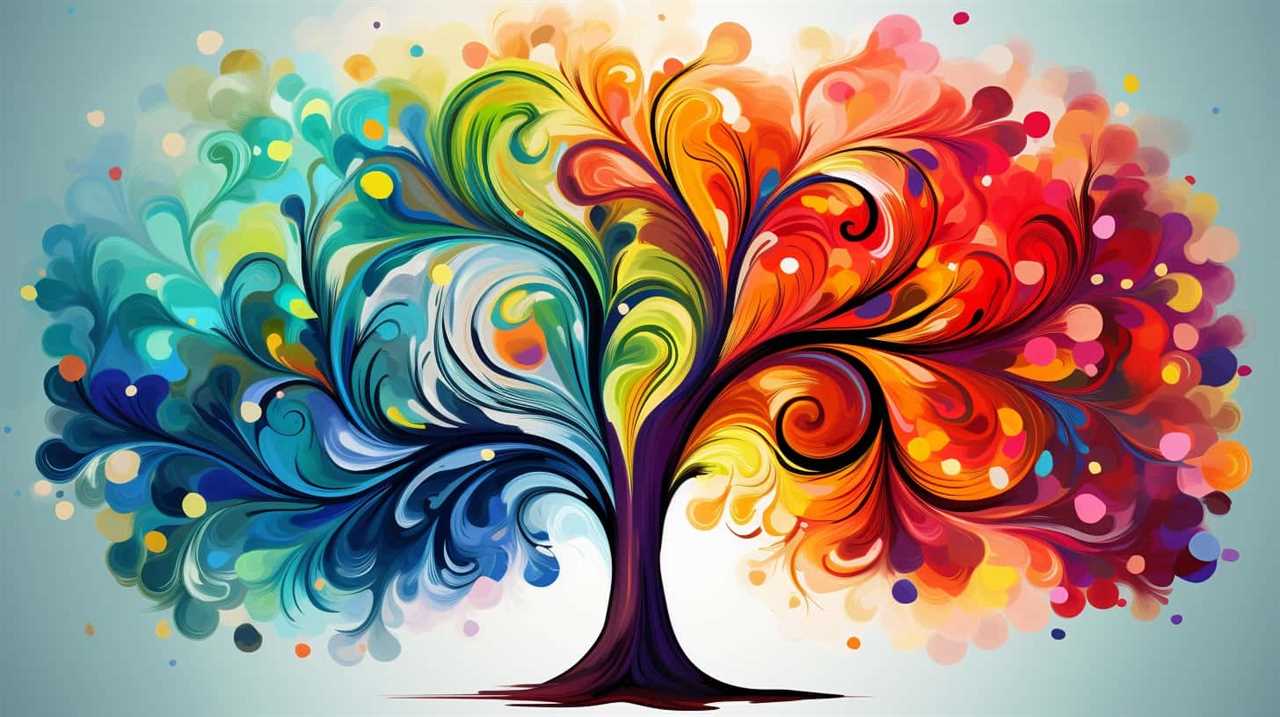
Through their creative expression, these artists have sparked conversations, shattered stereotypes, and paved the way for a more inclusive and equitable society.
Lauren’s talent in writing is matched by her passion for storytelling. Her love for books and deep understanding of culture and entertainment add a distinct flavor to her work. As our media and press contact, Lauren skillfully bridges the gap between afterQuotes and the broader media landscape, bringing our message to a wider audience.
Art and Creativity Quotations
13 Voices: Shaping Society Through Visual Expression
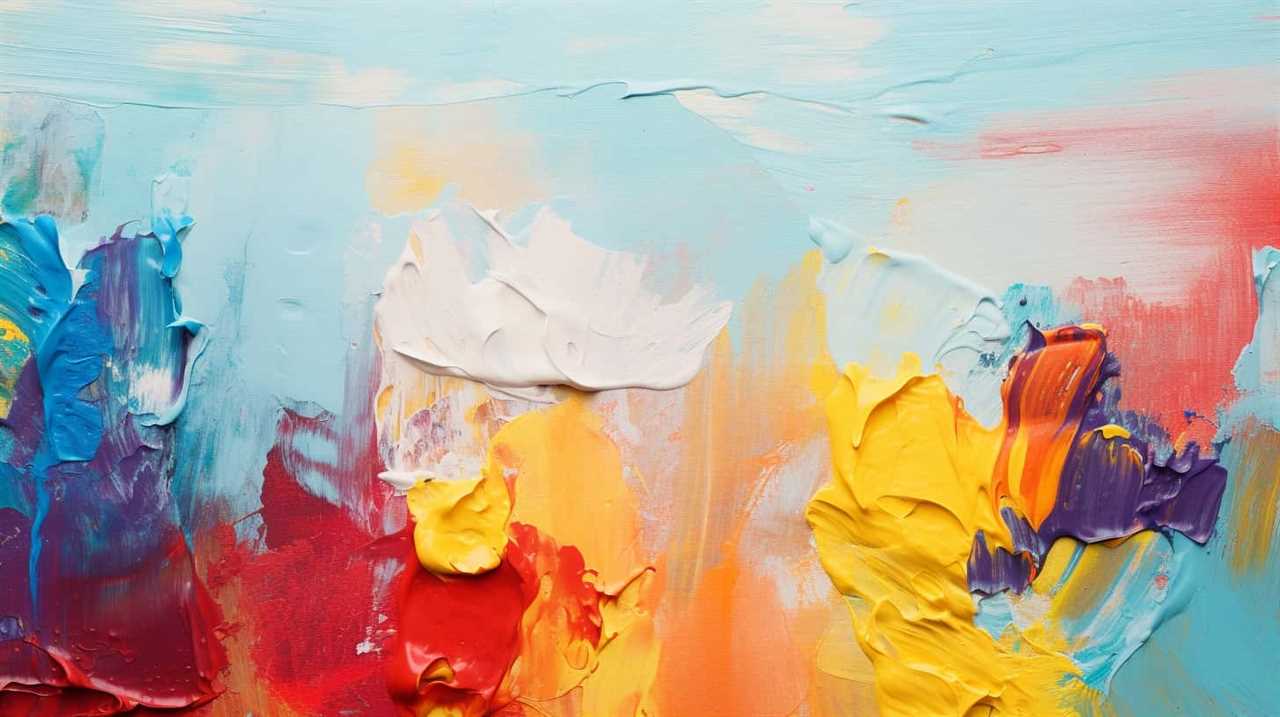
At 13 Voices: Shaping Society Through Visual Expression, we empower ourselves and others by harnessing the power of art to create change. By uniting our voices, we challenge societal standards, ignite conversations, and inspire transformation.
Take, for instance, the powerful artwork of Banksy, whose thought-provoking street art confronts social and political issues head-on. We believe that art has the ability to challenge, critique, and reshape society, serving as a catalyst for liberation.
By visually expressing our thoughts and emotions, we break free from societal constraints and redefine cultural norms. Art has the unique power to reflect and challenge the values of our society, shedding light on injustices and sparking movements for social justice.
Join us as we explore the limitless potential of contemporary art to shape a more inclusive and liberated world.
Key Takeaways
- Visual storytelling and impactful visuals have the power to transform society by challenging norms, sparking conversations, and inspiring change.
- Art plays a significant role in driving social transformation by challenging societal norms, provoking thought, and inspiring action.
- Creative expression contributes to social transformation by engaging with social and political issues in an accessible and relatable way.
- Visual communication has the power to catalyze change in society by evoking emotions, challenging norms, and provoking critical thinking.
The Power of Visual Expression
How can visual expression shape society and wield its power?
Visual storytelling and impactful visuals have the potential to transform society by challenging norms, sparking conversations, and inspiring change. Through the use of images, we can convey complex narratives and evoke emotions that words alone may struggle to capture.
Visual storytelling has the ability to bridge gaps, break down barriers, and foster empathy. When we see powerful images, they’ve the capacity to transcend language and cultural differences, allowing us to connect on a fundamental level. It’s through this connection that societal change can occur. Impactful visuals possess the ability to amplify voices that have been marginalized, providing a platform for those whose stories have often been silenced.
Moreover, impactful visuals have the power to disrupt dominant narratives and challenge the status quo. By presenting alternative perspectives and shining a light on injustices, visual expression can expose the hidden truths that have perpetuated oppressive systems. In doing so, it can empower individuals and communities to question existing power structures and advocate for a more just and equitable society.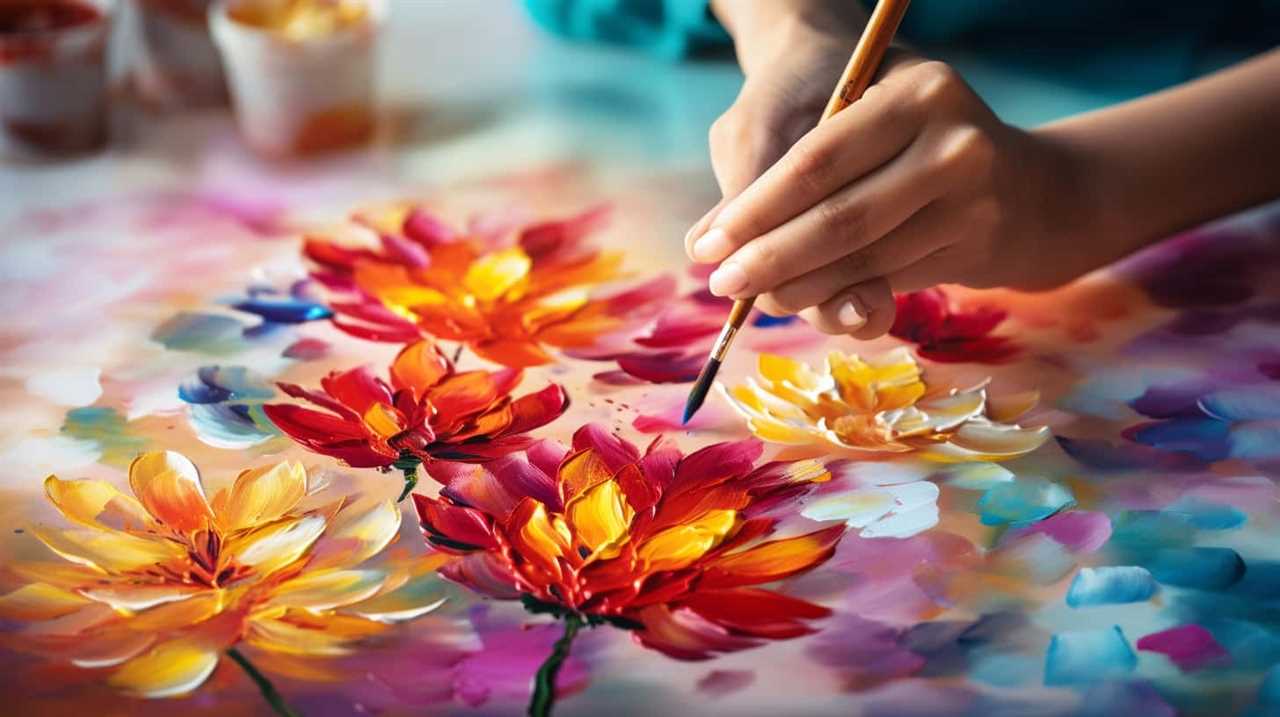
Visual expression isn’t only a tool for communication but also a catalyst for liberation. It has the power to ignite social movements, inspire activism, and mobilize communities. Through the lens of visual storytelling, we can reshape the narratives that shape our society and create a more inclusive and equitable world.
The power of visual expression lies in its ability to transcend words, provoke emotions, and ignite change.
Art as a Catalyst for Change
Art has always played a significant role in driving social transformation. Through the power of visual communication, artists have the ability to challenge societal norms, provoke thought, and inspire action.
Art has the potential to ignite a sense of activism, encouraging individuals to question the status quo and work towards positive change.
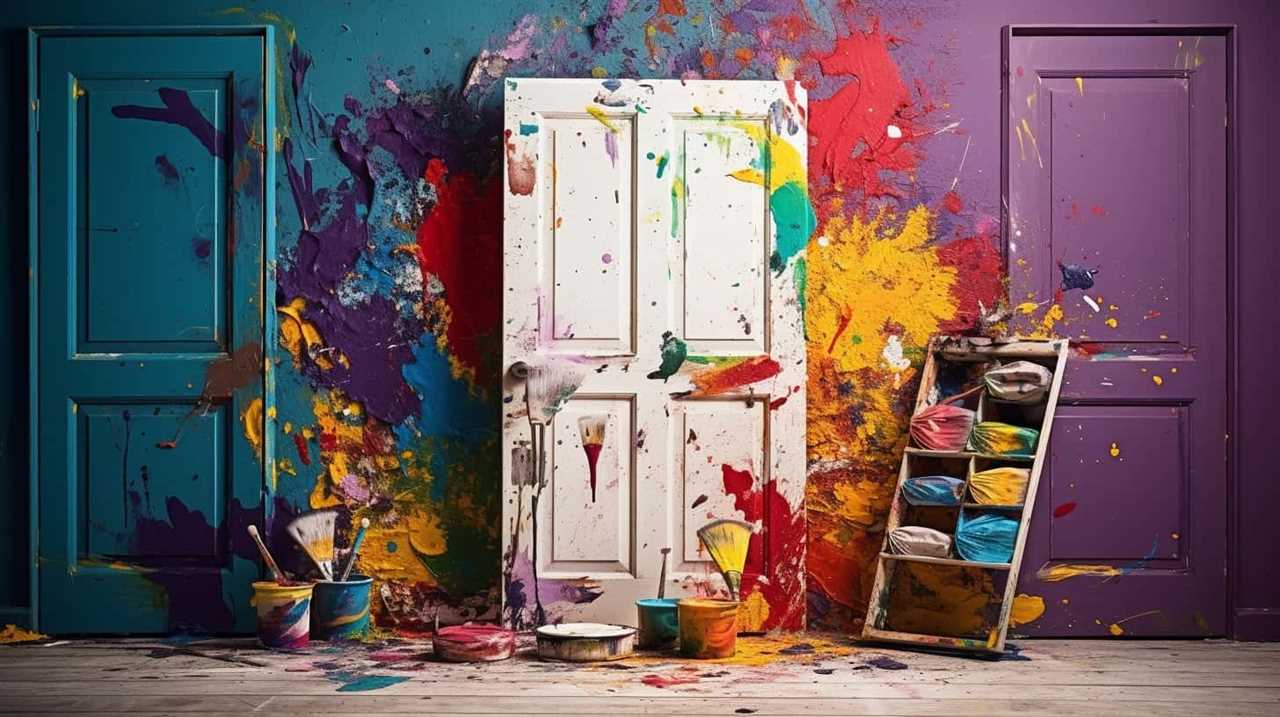
Art and Social Transformation
By harnessing the power of creative expression, we can actively contribute to social transformation and drive change in our communities.
Artistic activism and visual storytelling have emerged as powerful tools for liberation and social change.
Through art, we’re able to challenge norms and bring attention to critical issues that impact our society.
Artistic activism allows us to engage with complex social and political issues in a way that’s accessible and relatable to a wide audience.
Visual storytelling, on the other hand, has the ability to evoke emotions and create empathy, driving viewers to take action.
Power of Visual Communication
Through our use of visual communication, we’ve the power to catalyze change in society. Visual storytelling has the ability to evoke emotions, challenge norms, and provoke critical thinking.
The impact of imagery is undeniable, as it has the potential to shape public opinion, challenge oppressive systems, and inspire collective action. Art, as a catalyst for change, has the ability to break through barriers and reach a wider audience.
By utilizing visual communication, we can give a voice to the marginalized, expose social injustices, and advocate for equality and liberation. The power of visual communication lies in its ability to transcend language barriers and connect people on a universal level.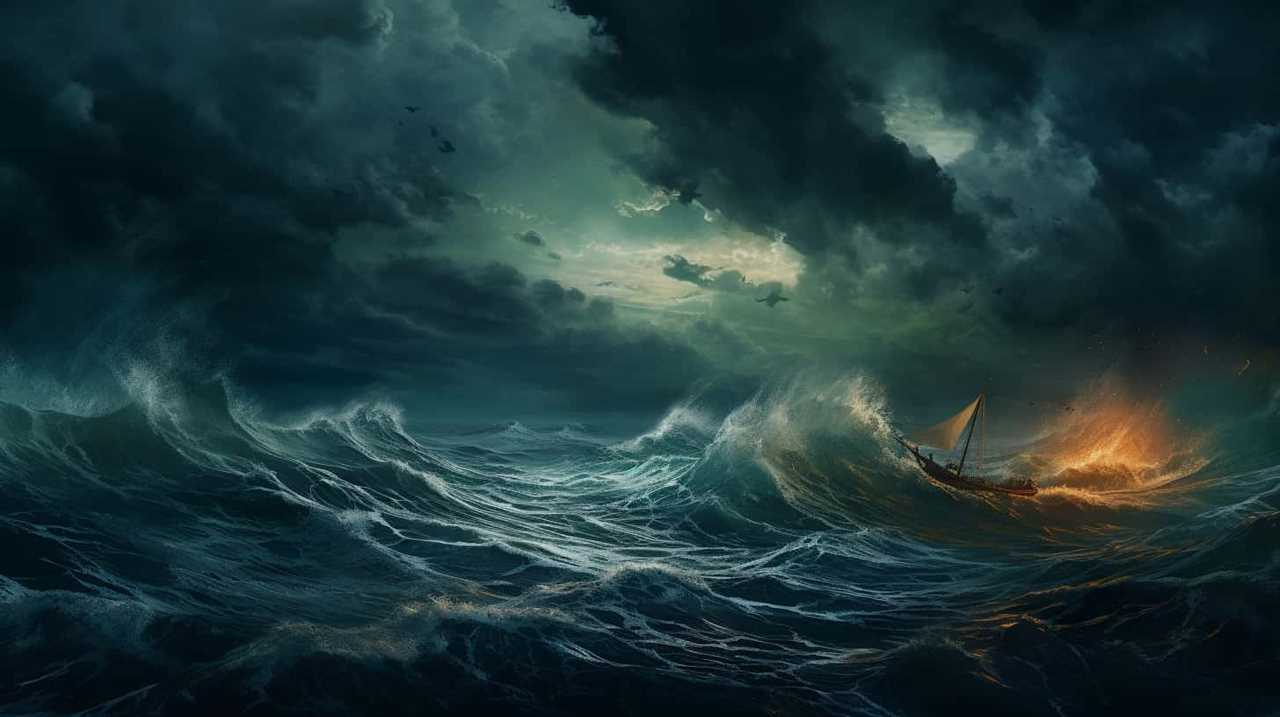
Through powerful and thought-provoking imagery, we can challenge the status quo and ignite a revolution of change.
Inspiring Activism Through Art
As advocates for social change, we can use art to ignite activism and inspire collective action.
Artistic activism, also known as visual protest, harnesses the power of artistic expression to challenge societal norms and advocate for justice.
Through bold and thought-provoking imagery, artists can evoke strong emotions and convey powerful messages that resonate with the audience.
Art has the ability to transcend language and cultural barriers, making it a universal medium for inspiring change.
By creating visual representations of social issues, artists can raise awareness, spark dialogue, and mobilize communities to take action.
Whether it’s through street art, murals, or performance art, artistic activism has the potential to disrupt the status quo, challenge oppressive systems, and pave the way for a more just and equitable society.
Critiquing Society Through Art
We, as artists, have the power to shed light on societal issues and provoke critical reflection with our visual expressions. Through our art, we’re able to challenge and critique societal norms, exposing the flaws and injustices that often go unnoticed. By exploring artistic expression, we can push the boundaries of what’s considered acceptable and challenge the status quo.
Art has always been a powerful tool for social commentary, allowing us to communicate complex ideas and emotions in a way that transcends language barriers. It provides a platform for marginalized voices to be heard, bringing attention to the struggles and inequalities faced by various communities.
In critiquing society through art, we aim to spark conversations, challenge preconceived notions, and provoke thought. By presenting alternate perspectives and highlighting the contradictions within our social structures, we encourage viewers to question the world around them and examine their own beliefs and biases. Through our art, we strive to create a space for dialogue and collective reflection, fostering a deeper understanding of societal issues and the need for change.
As we delve into the influence of art on social movements, we must recognize the power that art holds in mobilizing communities and effecting real change. Art has the ability to unite people, galvanizing them to take action and fight for justice. Whether it’s through powerful visual imagery, thought-provoking installations, or compelling performances, art serves as a catalyst for social transformation.
It has the ability to inspire and empower individuals, igniting a sense of urgency and activism within society. Art has the potential to shape the narrative, challenge oppressive systems, and ultimately, create a more liberated and equitable world.
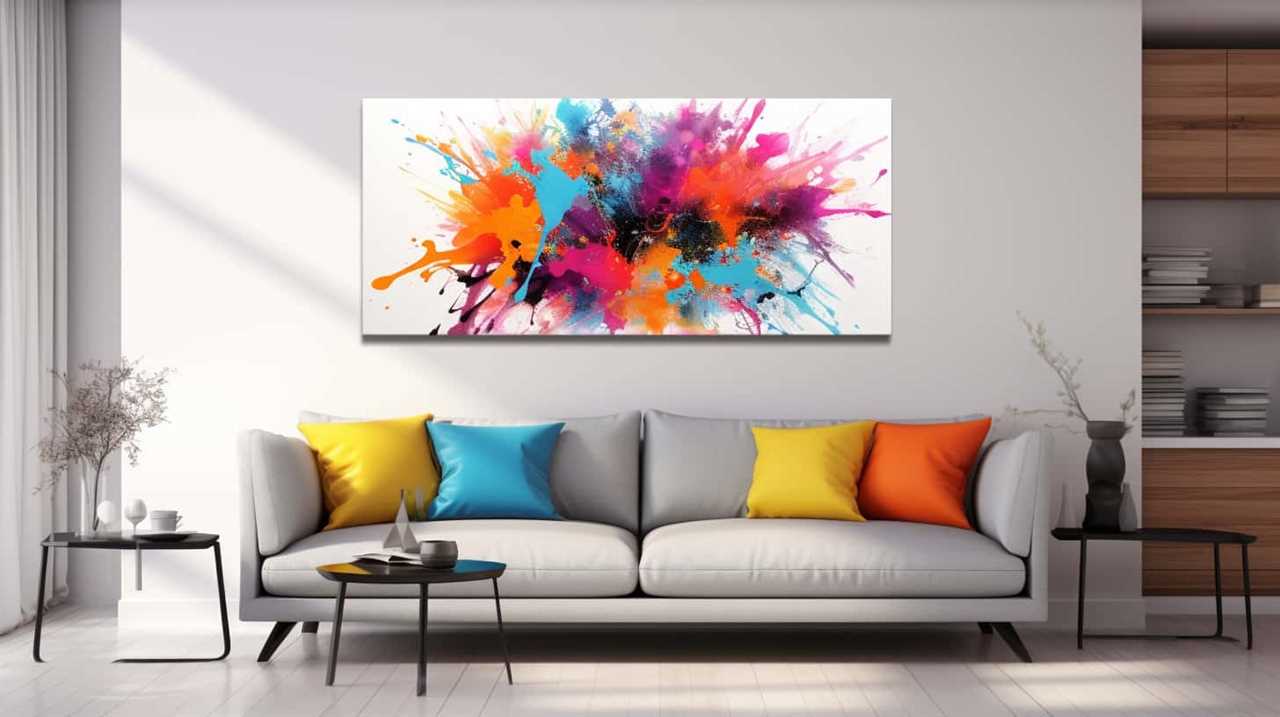
Art’s Influence on Social Movements
Artists have harnessed the power of visual expression to shape and propel social movements. Art’s impact on social movements can’t be understated. Throughout history, artists have played a significant role in advocating for social change and challenging the status quo. By using their artistic talents and creativity, artists have become activists, using their work to raise awareness, provoke thought, and inspire action.
Art has the unique ability to transcend language barriers and connect with people on a deeper emotional level. It has the power to evoke strong emotions, spark conversations, and challenge societal norms. Artists as activists have used their platforms to shed light on important social issues such as racism, inequality, and environmental degradation. Through their art, they create a space for dialogue and reflection, encouraging viewers to question the world around them and envision a better future.
Artists as activists have the power to amplify marginalized voices and bring attention to social injustices. They challenge the dominant narratives and offer alternative perspectives, pushing for social change. By using their art as a form of protest, they not only express their dissent but also mobilize communities and galvanize movements.
Redefining Cultural Norms Through Art
While art’s impact on social movements has been significant, it also has the power to redefine cultural norms through visual expression. Artistic rebellion and cultural revolution go hand in hand when it comes to challenging societal norms and expectations.
Through art, individuals and communities can push the boundaries of what’s considered acceptable, opening up new possibilities for self-expression and liberation.
Here are five ways in which art can redefine cultural norms:
- Breaking stereotypes: Art has the ability to challenge stereotypes and dismantle oppressive narratives, allowing marginalized voices to be heard and seen.
- Broadening perspectives: Art can expand people’s understanding of different cultures, challenging ethnocentrism and promoting cultural diversity and inclusivity.
- Questioning gender norms: Artists have the power to challenge traditional gender roles and norms, encouraging a more fluid and inclusive understanding of gender identity.
- Addressing taboo subjects: Art can provide a platform for discussing taboo subjects such as mental health, sexuality, and politics, bringing them to the forefront of public discourse.
- Fostering empathy: Through visual expression, art can evoke emotions and promote empathy, encouraging individuals to see the world through different lenses and challenge their own biases.
Through artistic rebellion and cultural revolution, art has the potential to reshape society’s understanding of cultural norms, creating a more inclusive and liberated world.
Art’s Role in Challenging Injustice
Art plays a pivotal role in challenging injustice through visual expression. It has long been recognized as a powerful tool for social change, serving as a catalyst for political activism and a medium through which marginalized voices can be heard. Art has the ability to transcend language barriers and evoke emotional responses, making it an effective means of raising awareness and inciting action against injustice.
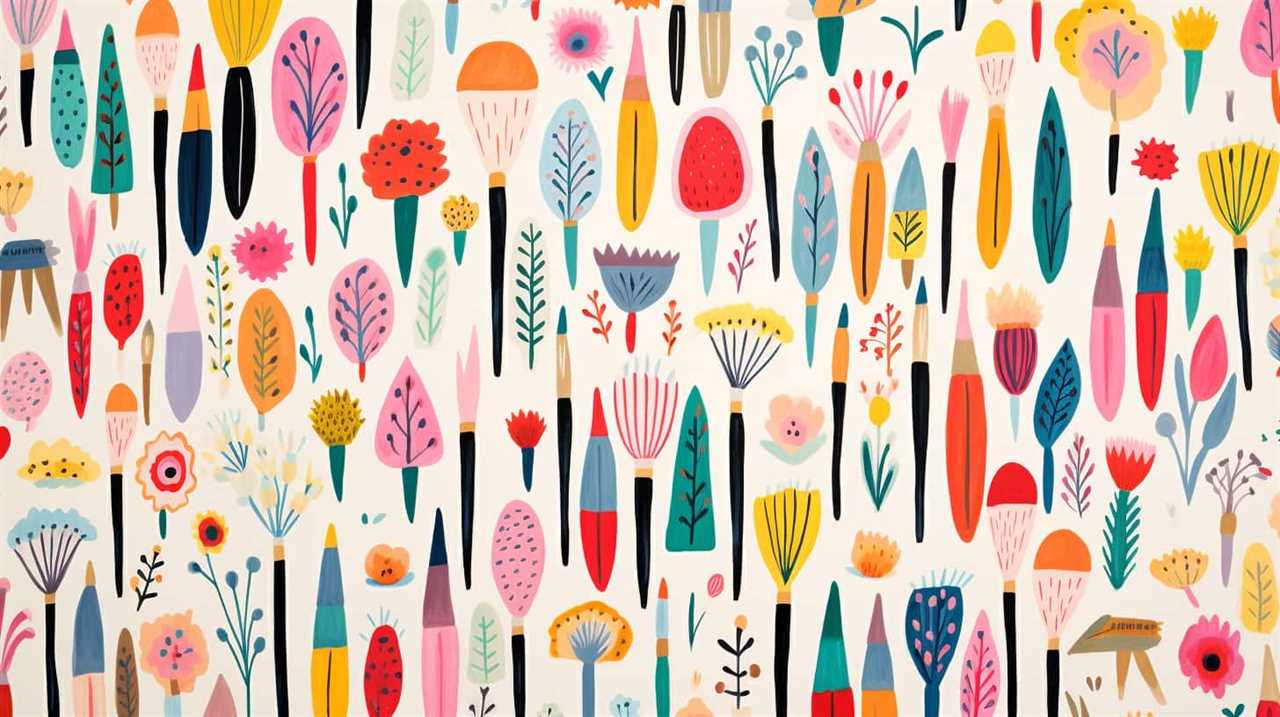
Artists have historically used their work to address pressing social issues and advocate for change. From the civil rights movement to the feminist movement, art has played a significant role in shaping public opinion and pushing for progress. Whether through paintings, sculptures, or photography, artists have the unique ability to convey messages that challenge societal norms and question existing power structures.
Art as a tool for social justice allows individuals to express their experiences, frustrations, and aspirations in a way that resonates with others. By visually representing the injustices they face, artists can evoke empathy and inspire collective action. Through their work, they can shed light on systemic inequalities and give voice to those who’ve been silenced.
Art as a Reflection of Societal Values
To truly understand the impact of visual expression on society, it’s important to recognize how art serves as a mirror reflecting our collective values. Artistic interpretation allows artists to delve into the depths of societal commentary, offering insights and critiques that challenge the status quo. Through their work, artists can hold up a mirror to society, reflecting its values, beliefs, and aspirations.
Here are five ways in which art serves as a reflection of societal values:
- Social Issues: Art often tackles pressing social issues, such as inequality, discrimination, and environmental degradation. It provides a platform for artists to express their concerns and provoke conversations that lead to change.
- Cultural Identity: Art captures the essence of cultural identity, celebrating diversity and preserving traditions. It reflects the values, rituals, and customs that define a particular society or community.
- Political Commentary: Artists have long used their work to comment on political systems, critiquing power structures and challenging authority. Through their art, they can shine a light on injustices and advocate for social change.
- Beauty and Aesthetics: Artistic expression reflects society’s evolving standards of beauty and aesthetics. It showcases the different ways in which society perceives and appreciates art, influencing trends and shaping taste.
- Historical Documentation: Art serves as a visual record of historical events and societal milestones. It captures moments in time, allowing future generations to understand the values, struggles, and triumphs of the past.
How Does Visual Expression Influence Technology’s Role in Art Dialogue?
Visual expression plays a crucial role in technology’s role in art dialogue by shaping how artists communicate and audiences perceive their work. Advancements in digital art tools and platforms have opened new possibilities for creative expression, sparking ongoing conversations about the intersection of technology and art.
The Transformative Potential of Contemporary Art
Building upon the recognition of art as a reflection of societal values, we now explore the transformative potential of contemporary art.
Contemporary art has the power to challenge and transform perspectives, pushing boundaries and provoking thought in ways that traditional art forms may not. Through artistic innovation, contemporary artists are able to engage with pressing social, political, and cultural issues, providing a platform for dialogue and reflection.
One of the key ways in which contemporary art transforms perspectives is through its ability to challenge the status quo. By presenting alternative narratives and challenging dominant ideologies, contemporary artists encourage viewers to question established norms and consider new possibilities. This process of questioning and reevaluating can lead to a shift in consciousness and a greater awareness of societal injustices.
Artistic innovation is another crucial element in the transformative potential of contemporary art. Artists today are constantly exploring new mediums, techniques, and forms of expression, pushing the boundaries of what’s considered art. This experimentation not only challenges traditional notions of art, but also invites viewers to engage with the artwork in different ways. By breaking free from established conventions, contemporary art has the ability to inspire and provoke, pushing society towards new ways of thinking and being.
Frequently Asked Questions
How Can Visual Expression Be Used to Shape Society?
Visual expression shapes society by empowering artistic activism and fostering visual storytelling. It allows us to challenge norms, ignite critical thinking, and amplify marginalized voices, paving the way for social change and liberation.
What Are Some Examples of Art That Has Sparked Social Change?
Artivism and protest art are powerful examples of how art can spark social change. These forms of visual expression challenge the status quo, ignite conversations, and mobilize communities towards liberation and justice.
How Can Art Be Used to Challenge Societal Norms?
Artistic rebellion challenges societal norms by presenting unconventional perspectives. Through visual expression, we liberate ourselves from the shackles of conformity. Art has the power to ignite change, to inspire revolution, and to reshape society.
What Role Does Art Play in Addressing Social Injustice?
Art’s impact on addressing social injustice is profound. Artists as activists have the power to amplify marginalized voices, challenge oppressive systems, and ignite change. Through visual expression, art becomes a catalyst for liberation and a powerful tool for social transformation.
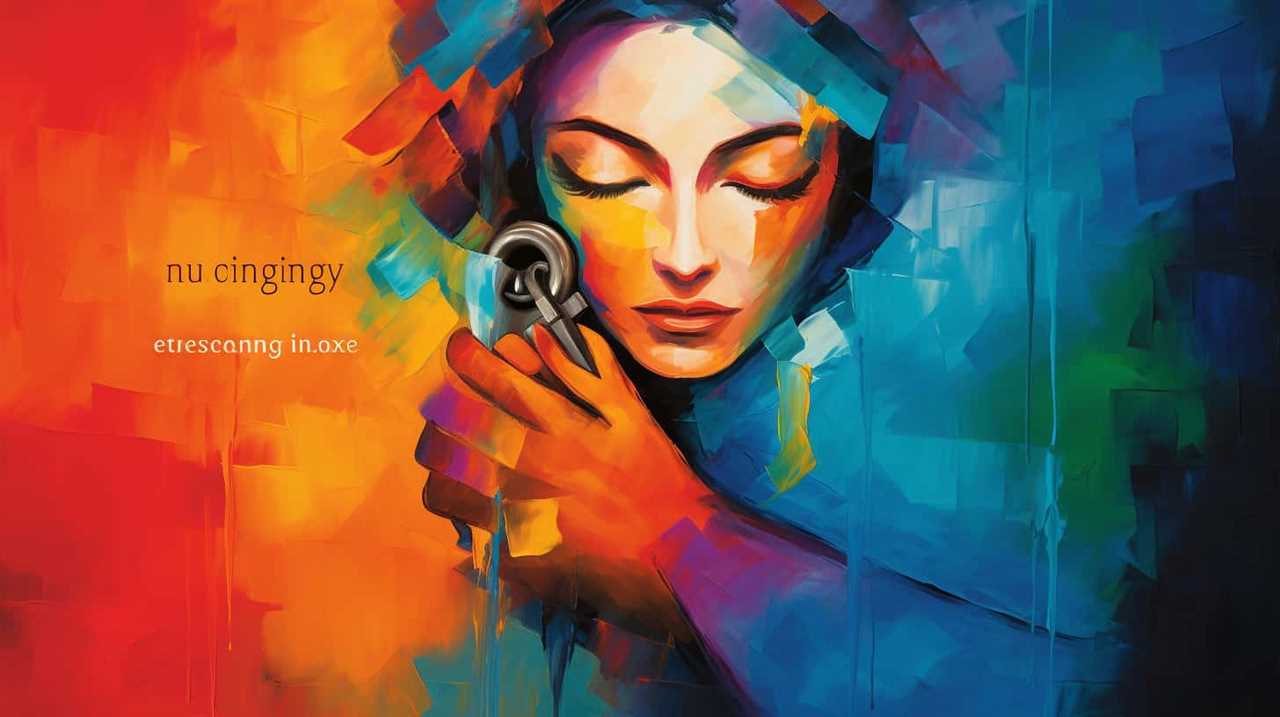
How Does Contemporary Art Have the Potential to Transform Society?
Contemporary art, with its power of visual expression, has the potential to ignite societal transformation. Through its thought-provoking and boundary-pushing nature, it challenges norms and inspires critical thinking, creating a path towards liberation and progress.
Conclusion
In conclusion, visual expression holds an immense power to shape society and ignite change. Through art, we can critique societal norms, challenge injustice, and redefine cultural values. It serves as a reflection of our values and a catalyst for social movements.
The transformative potential of contemporary art can’t be underestimated. By embracing the coincidence of our diverse voices, we can create a society that values and celebrates the power of visual expression to shape a better future.
Lauren’s talent in writing is matched by her passion for storytelling. Her love for books and deep understanding of culture and entertainment add a distinct flavor to her work. As our media and press contact, Lauren skillfully bridges the gap between afterQuotes and the broader media landscape, bringing our message to a wider audience.
-

 Funerals Quotations3 months ago
Funerals Quotations3 months agoSoothing Hope Quotes for Funeral Reflections
-

 TV Shows Quotations2 months ago
TV Shows Quotations2 months agoTop 4 Unforgettable TV Drama Monologues
-

 Movies Quotations4 weeks ago
Movies Quotations4 weeks agoUnforgettable Cult Movie Quotes: A Compiled List
-

 Education and Knowledge1 week ago
Education and Knowledge1 week agoUnlock Success with the Best Study Motivation Quotes
-

 Travel and Exploration Quotations3 weeks ago
Travel and Exploration Quotations3 weeks agoWisdom on Waves: Notable Maritime Explorer Quotations
-

 Education and Knowledge1 week ago
Education and Knowledge1 week agoBest Study Quotes: Unlock Student Potential!
-

 Military Quotations2 months ago
Military Quotations2 months agoInspiring Military Quotations for Strength & Honor
-

 Travel and Exploration Quotations3 weeks ago
Travel and Exploration Quotations3 weeks agoWhy Travel Teaches Unforgettable Life Wisdom?

















